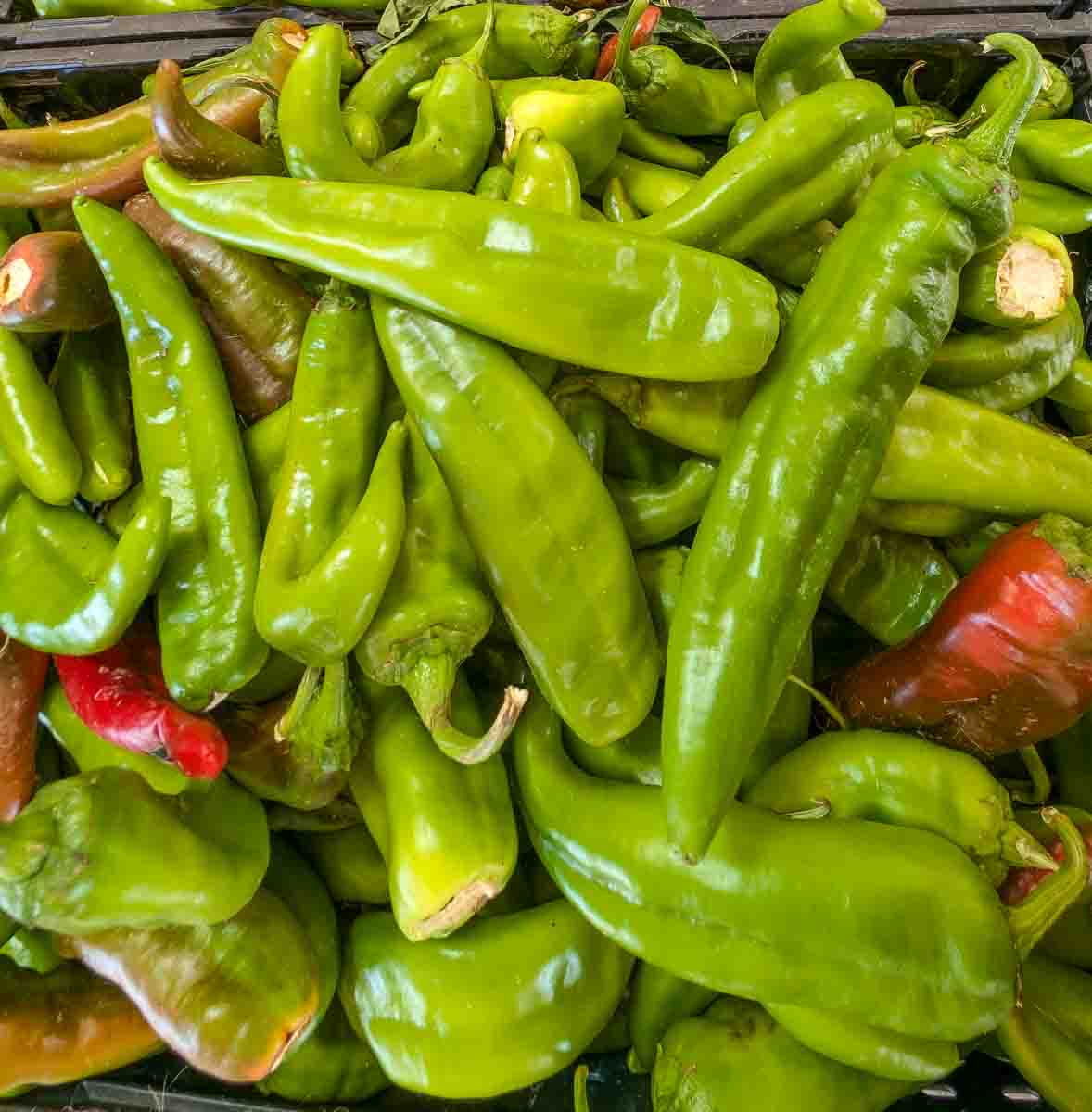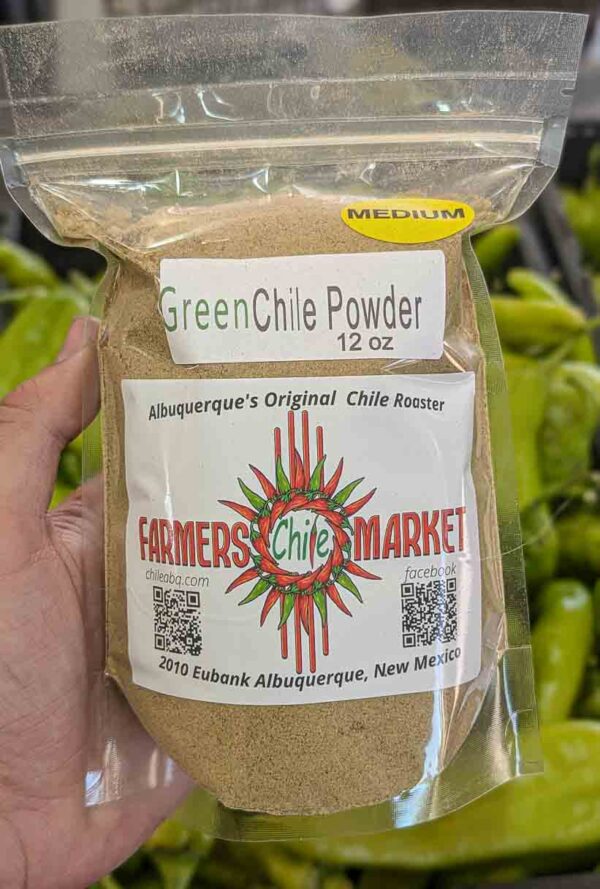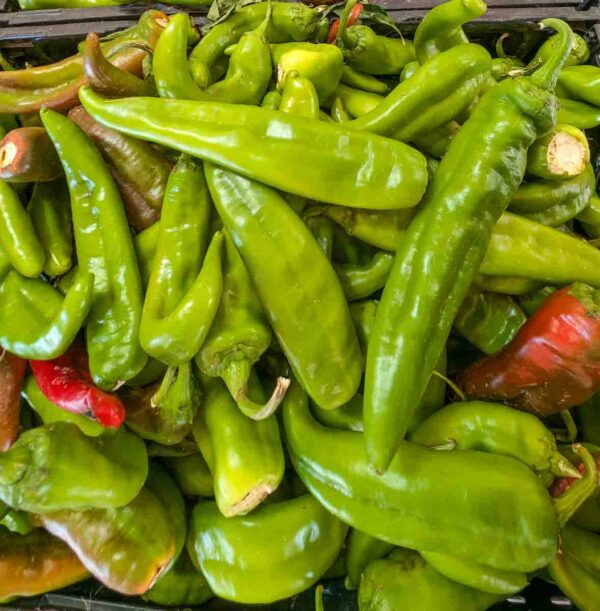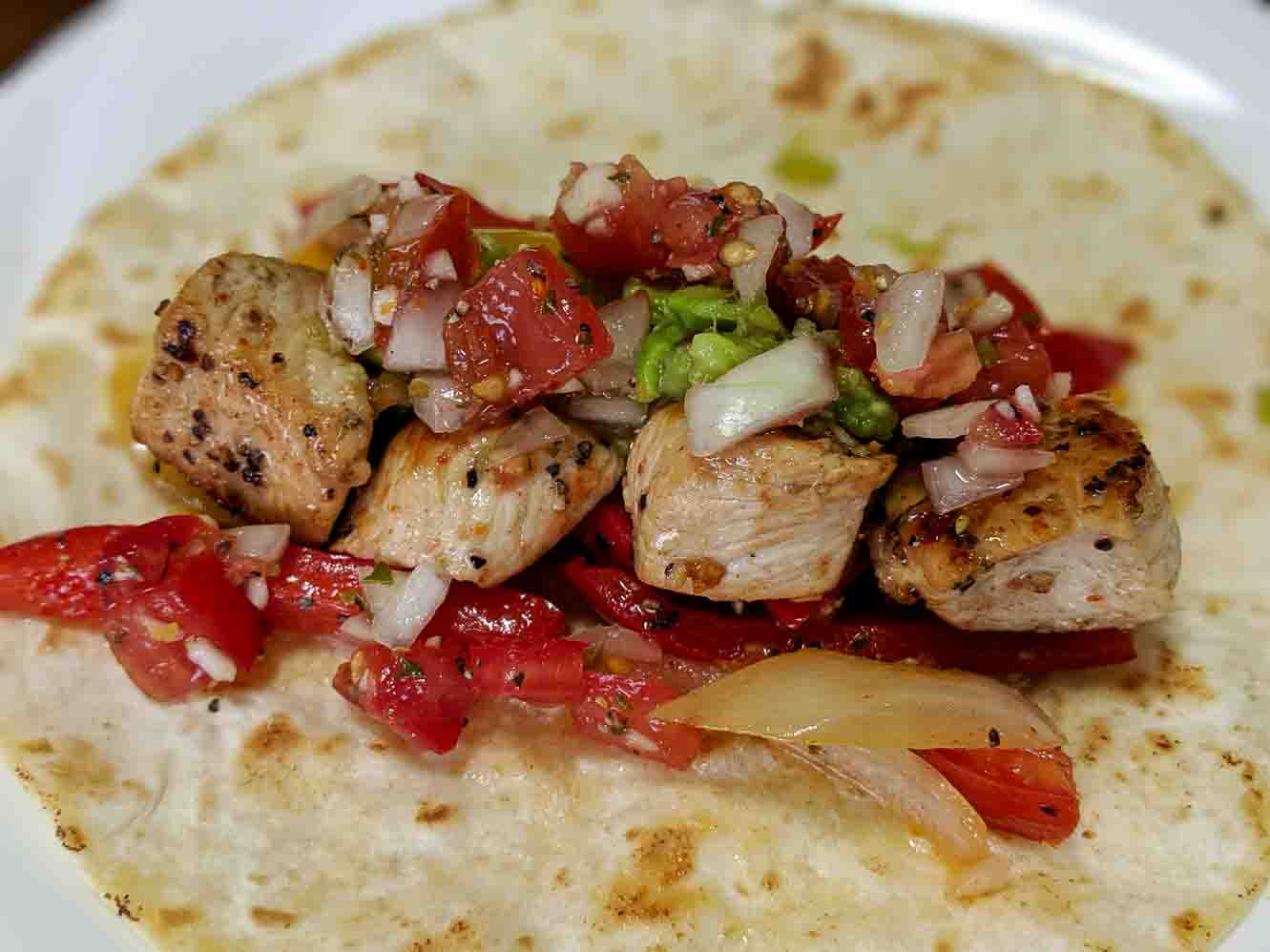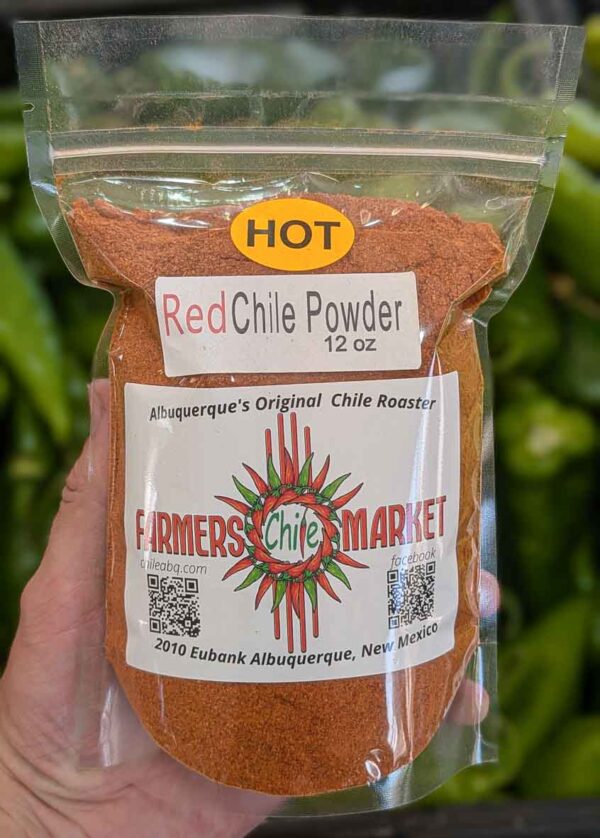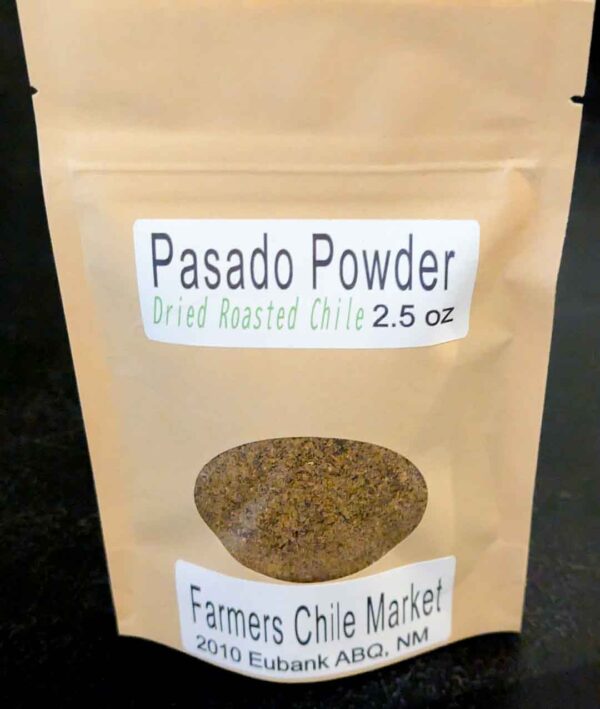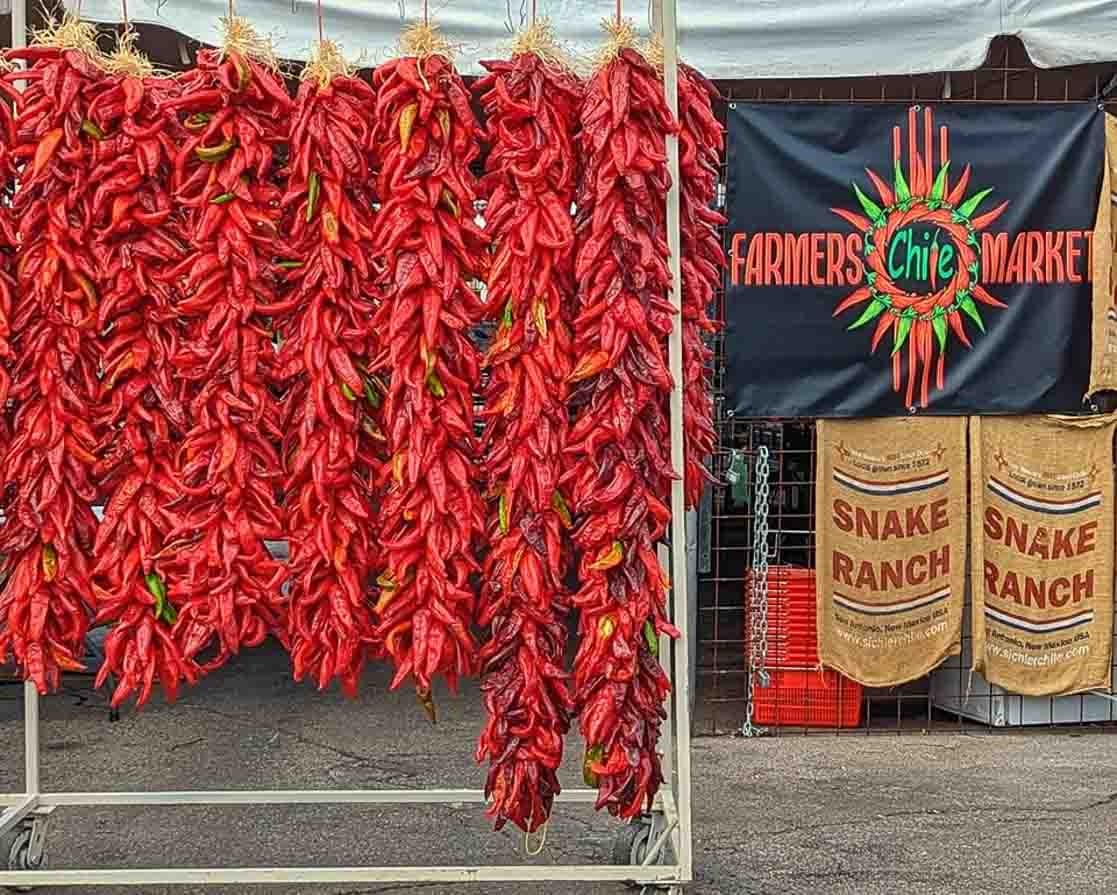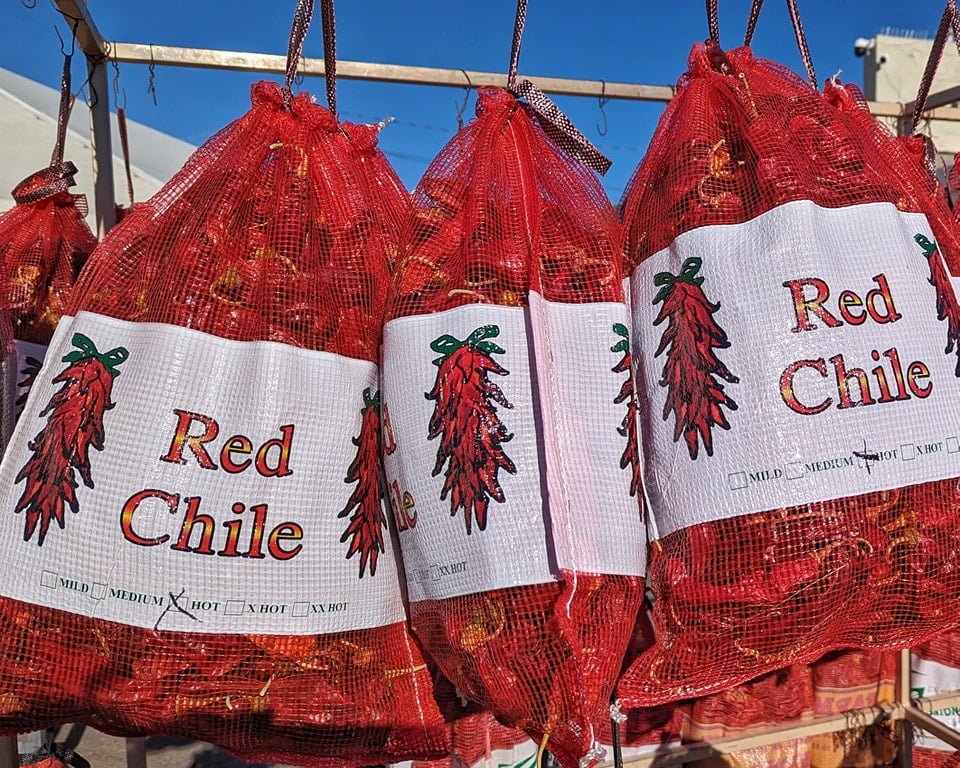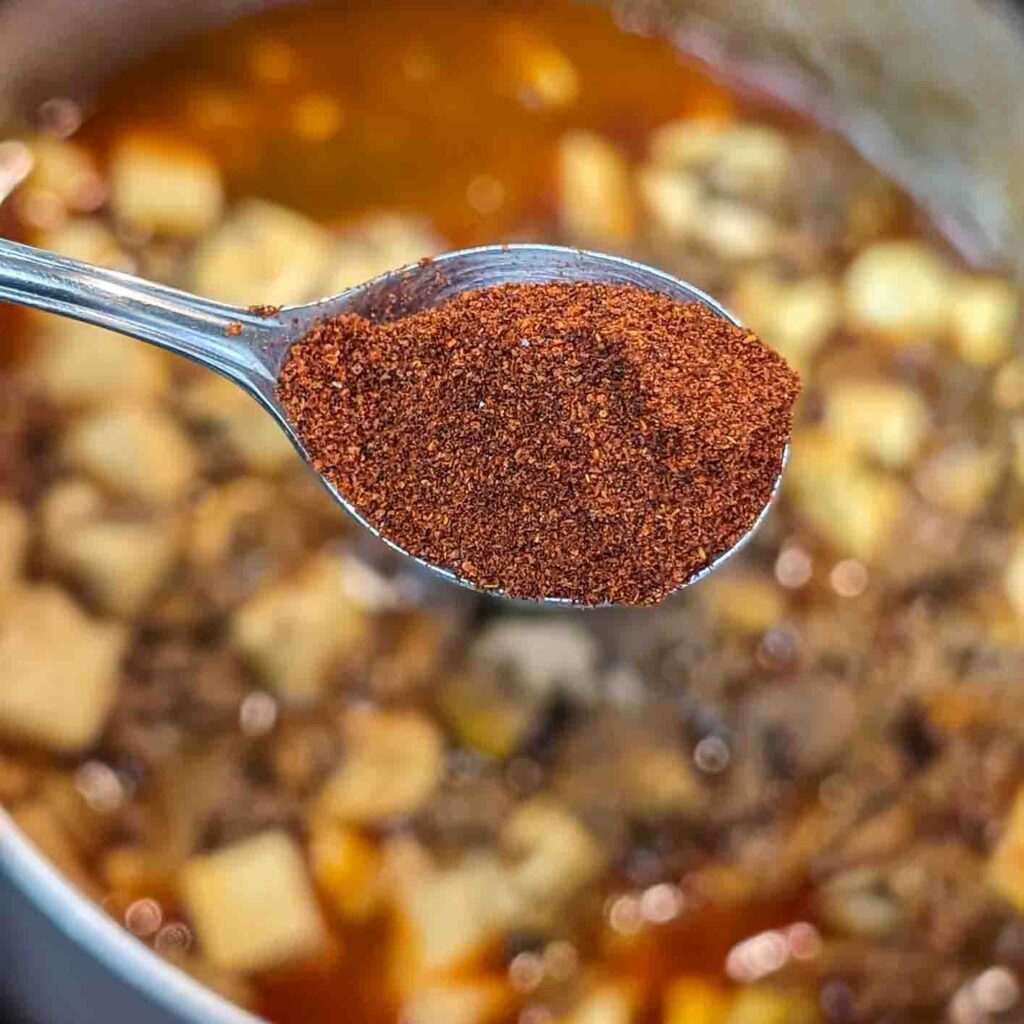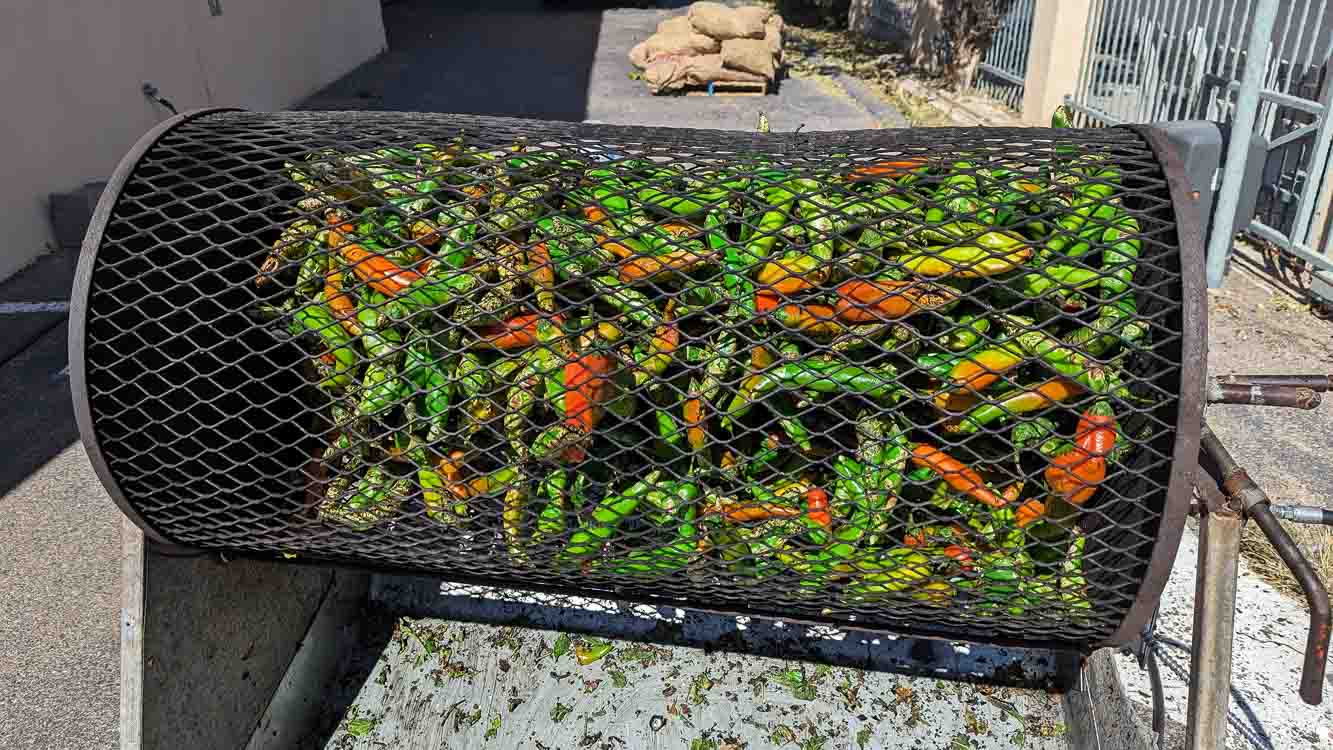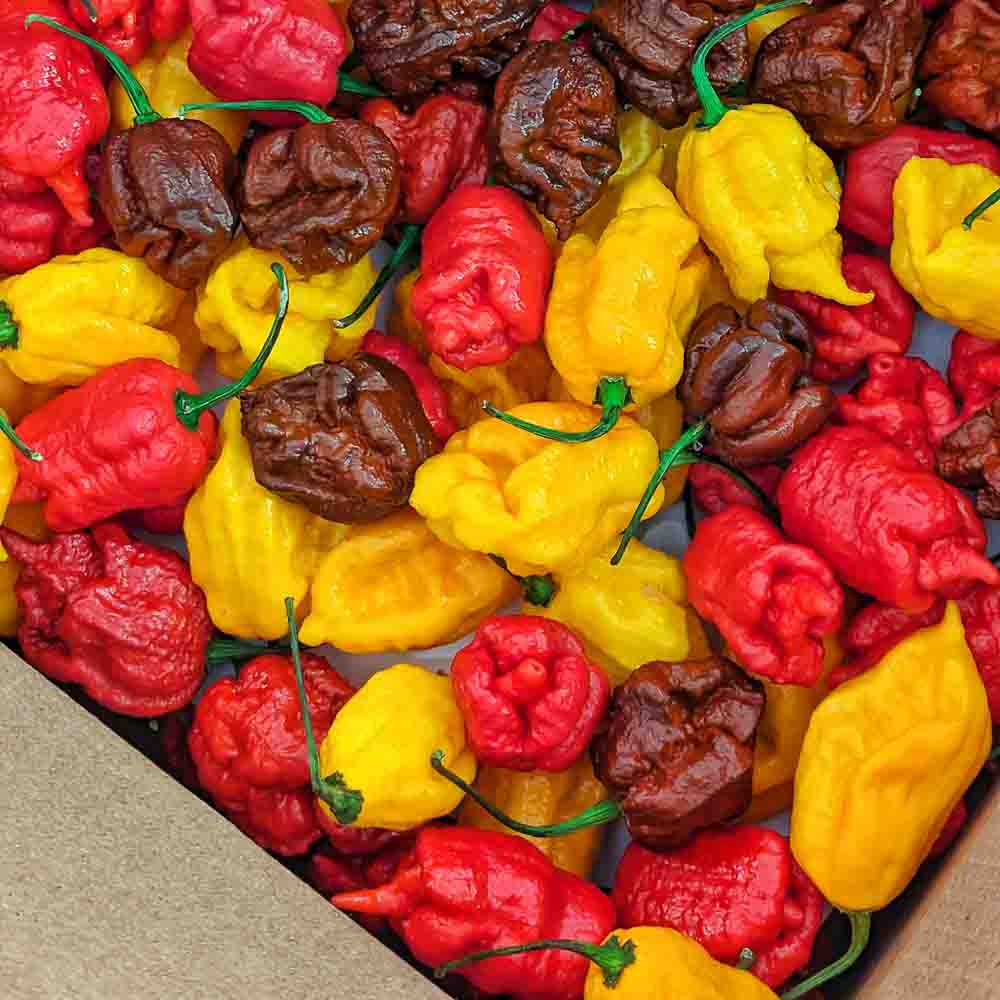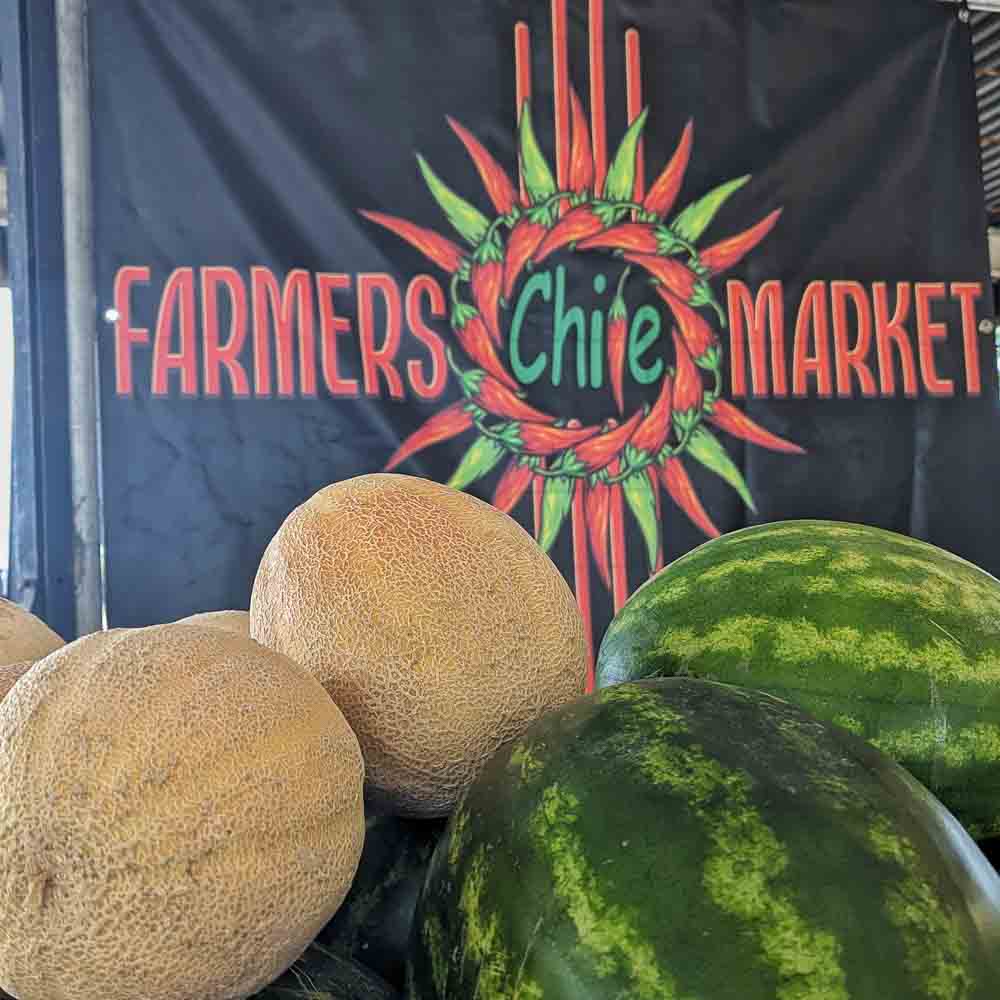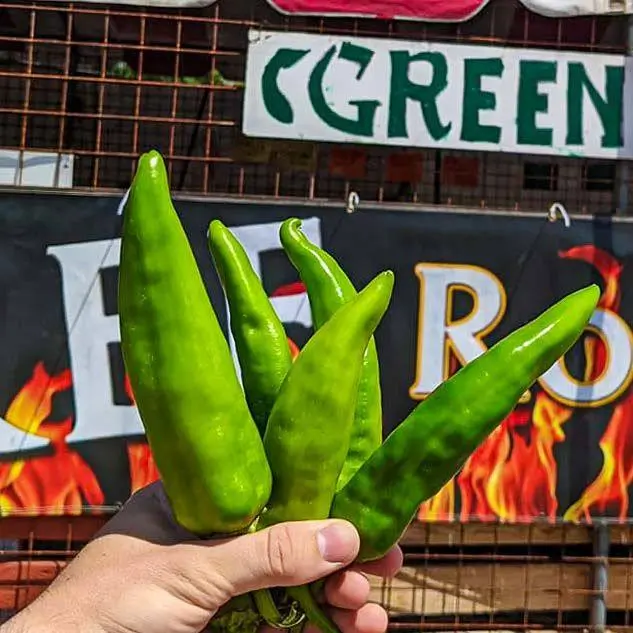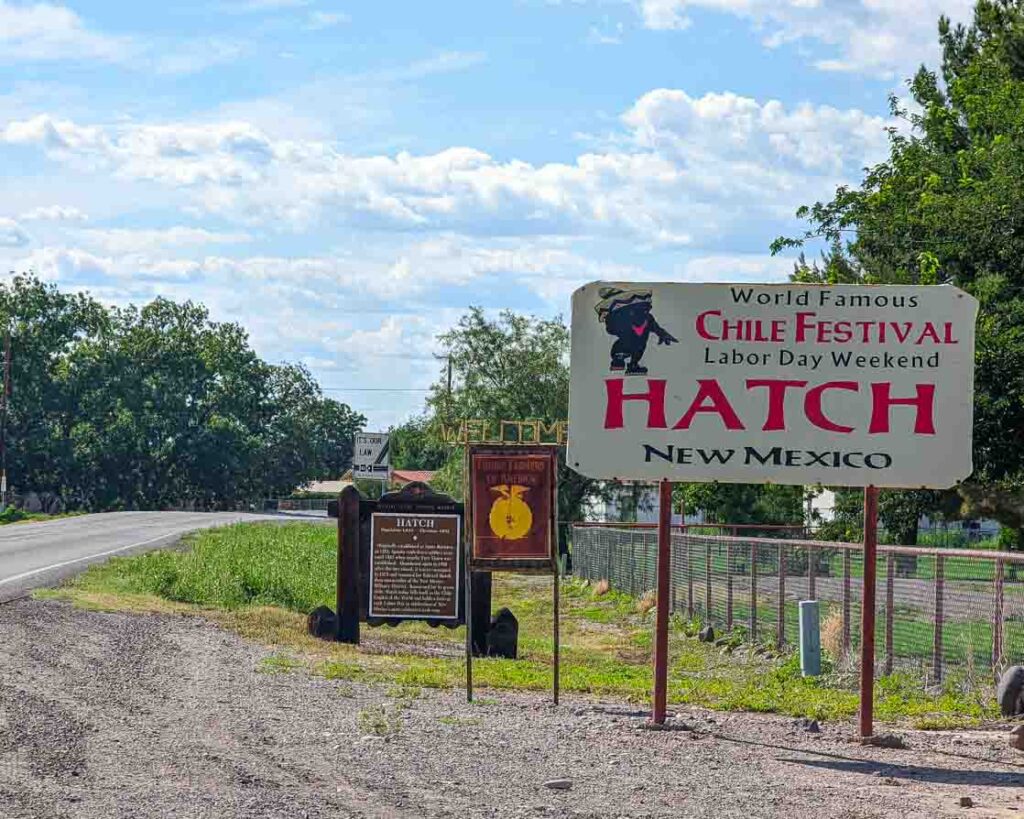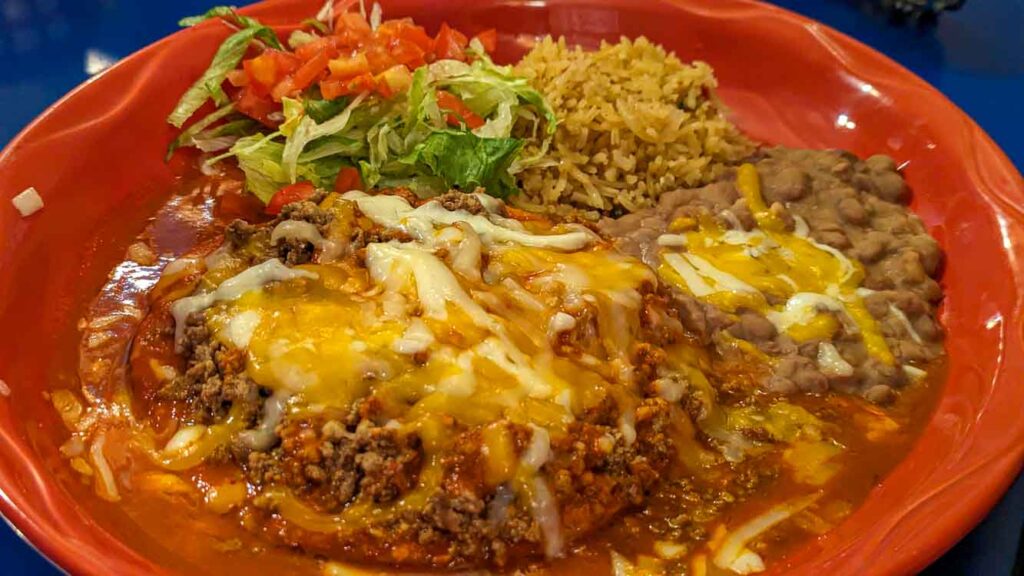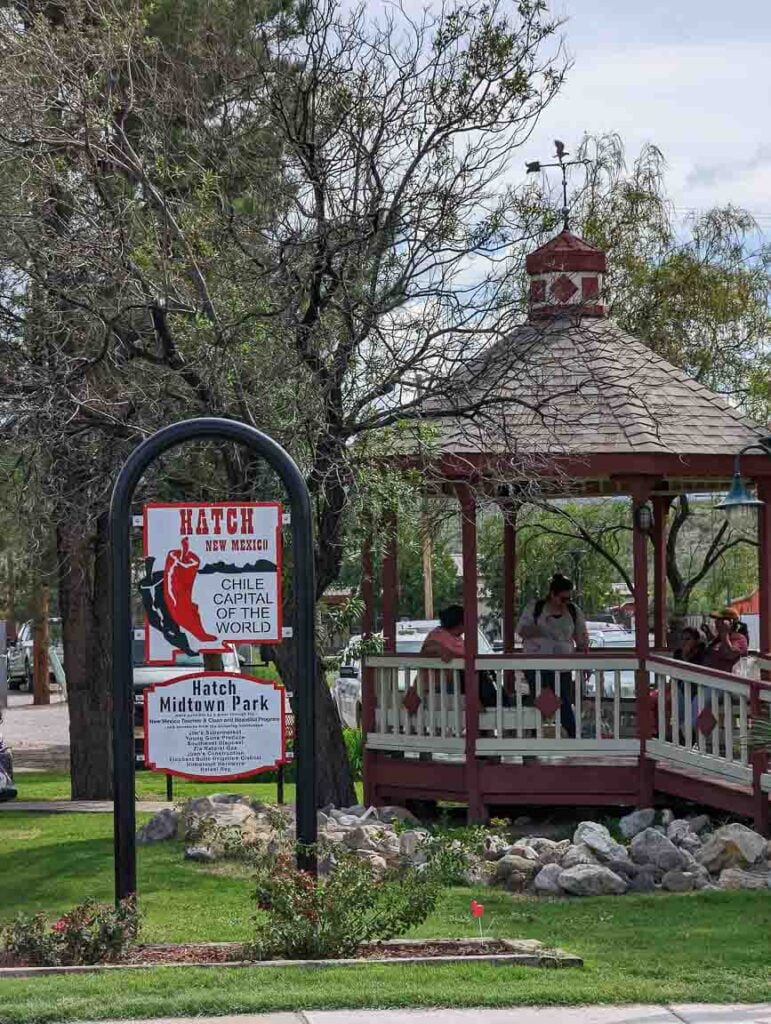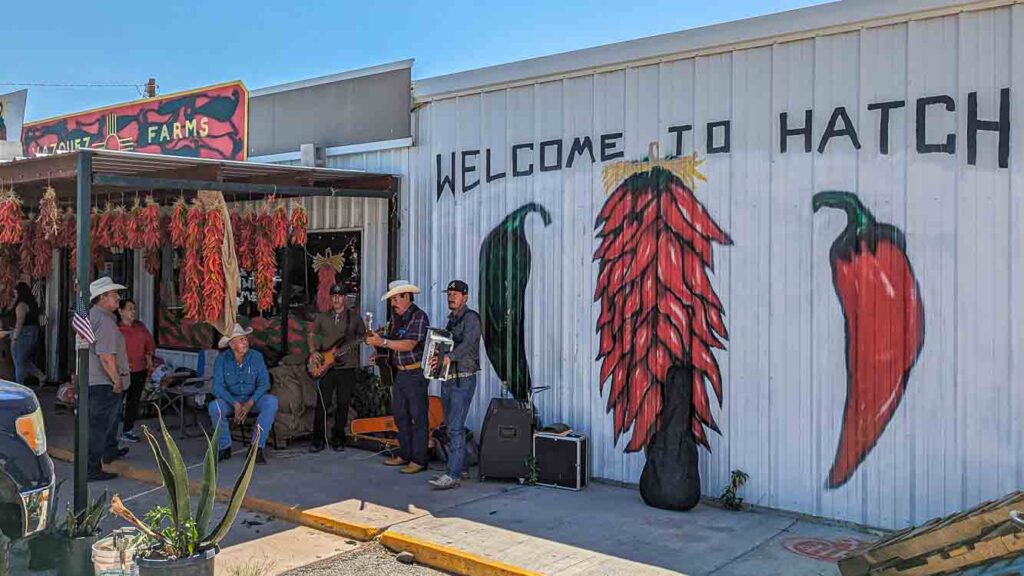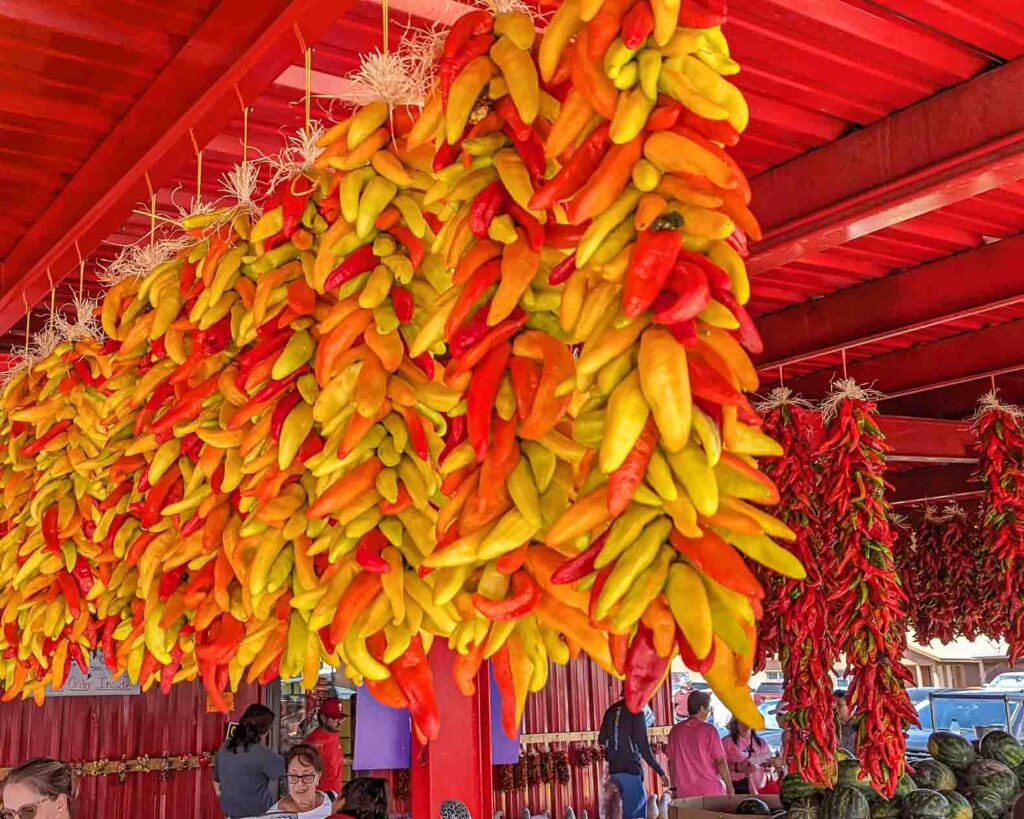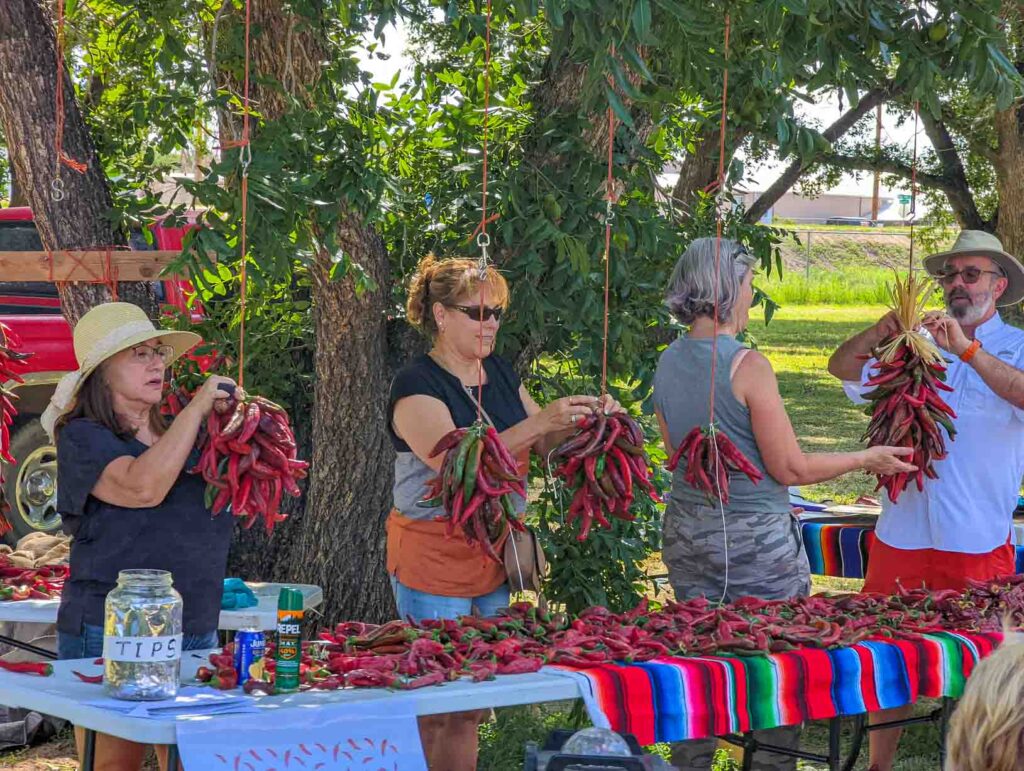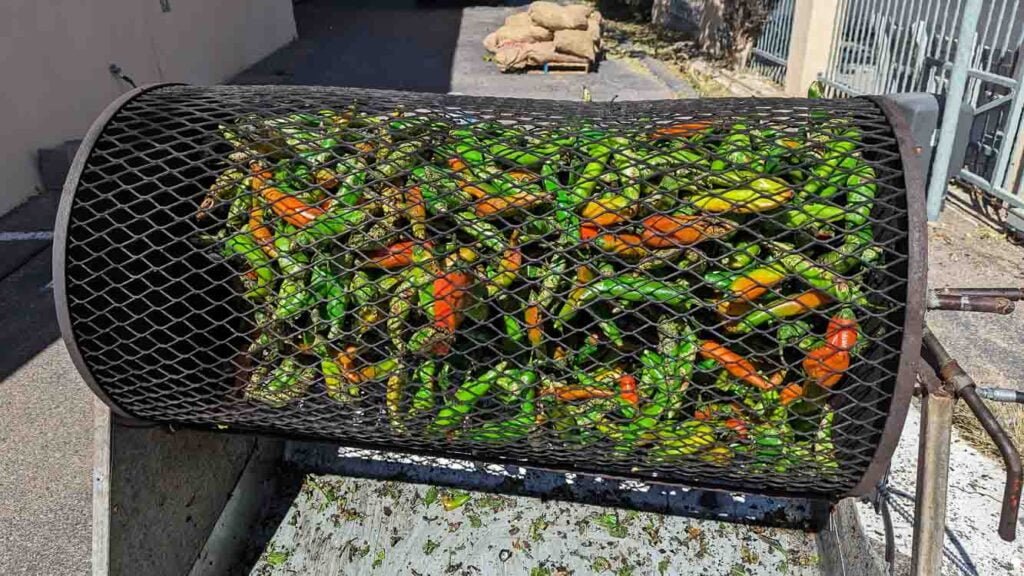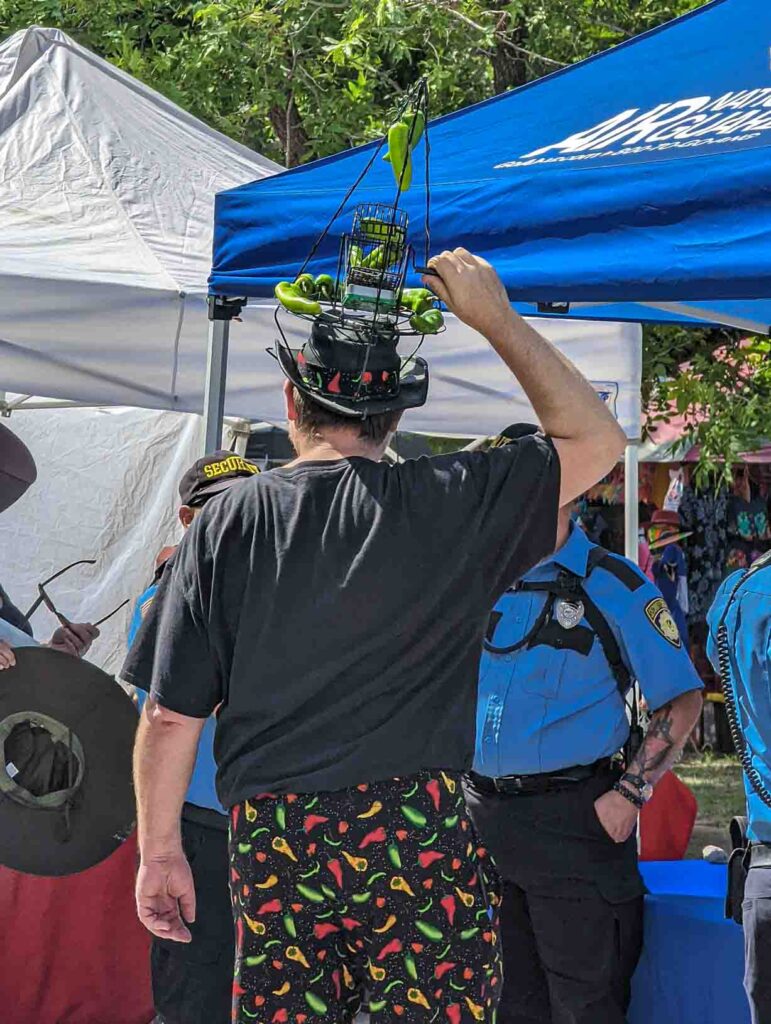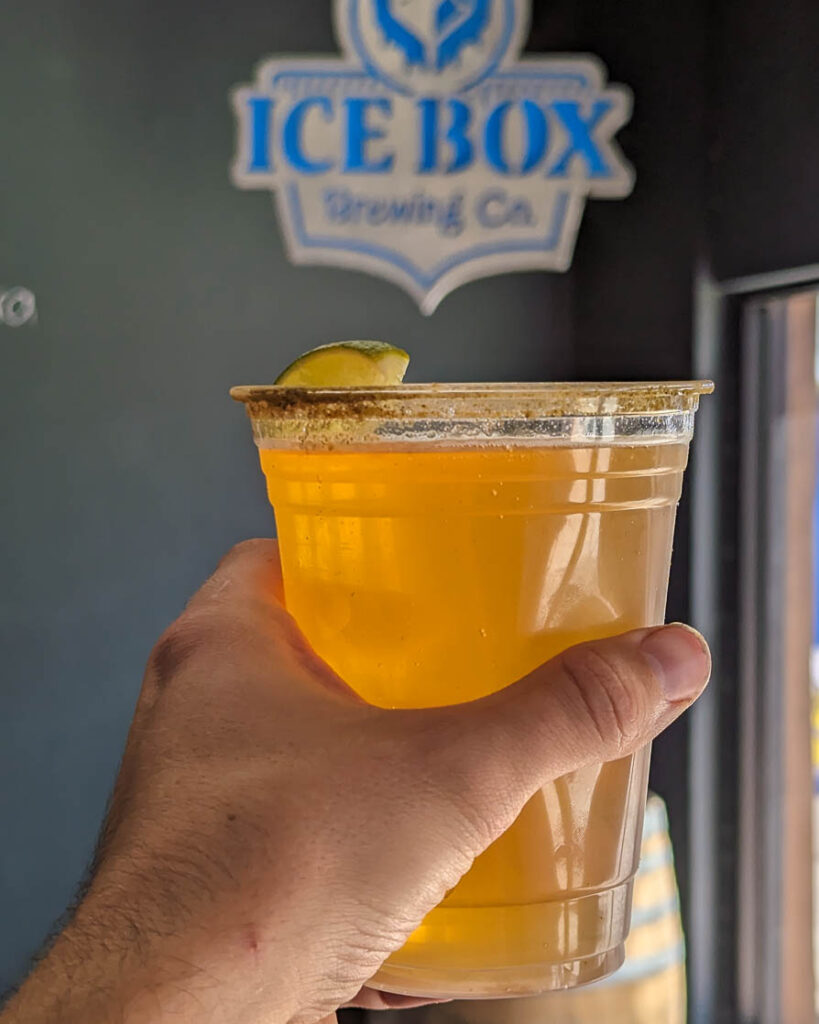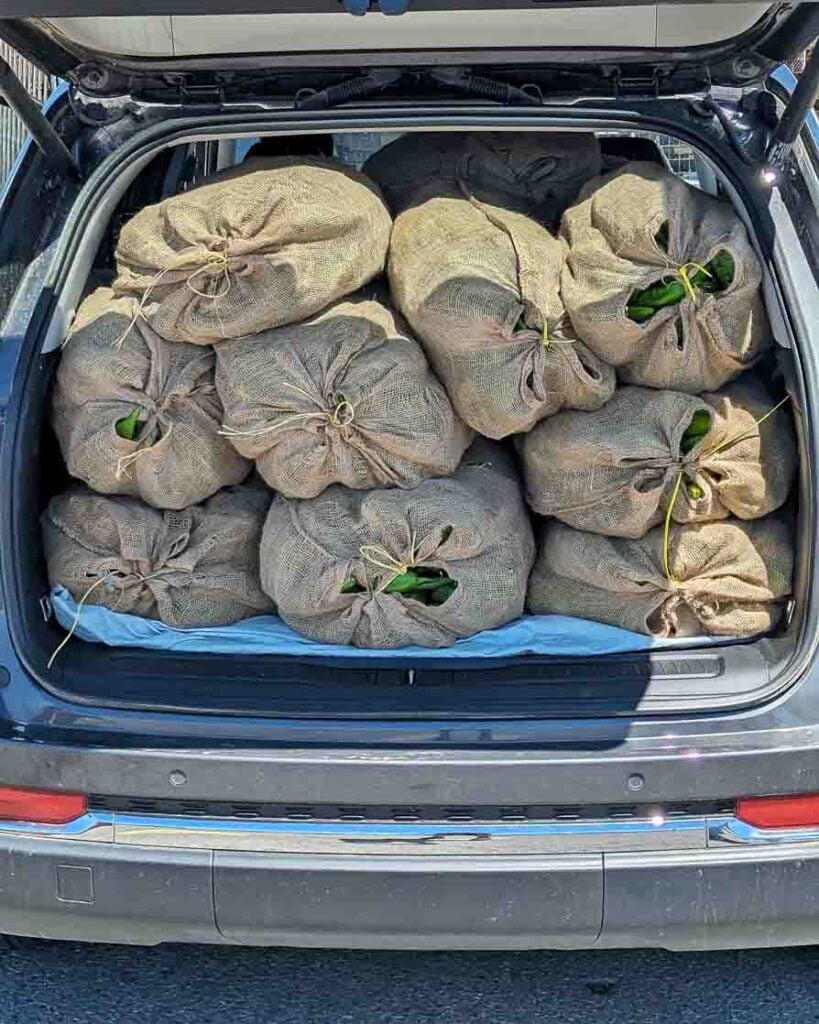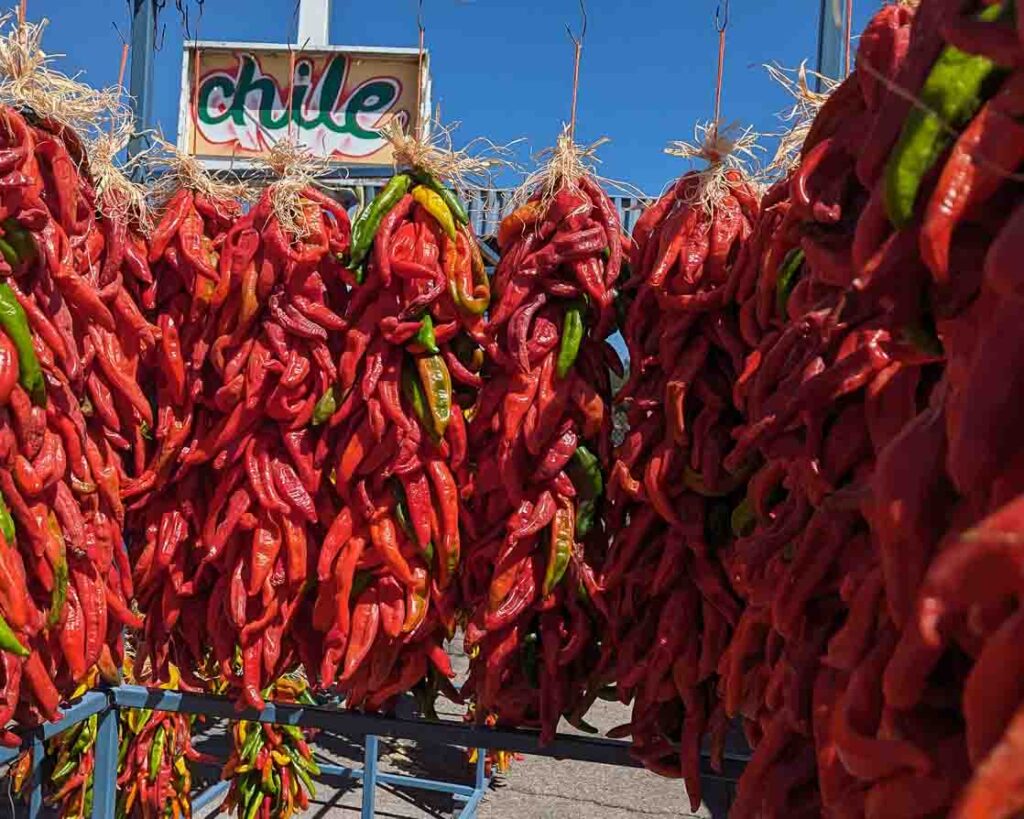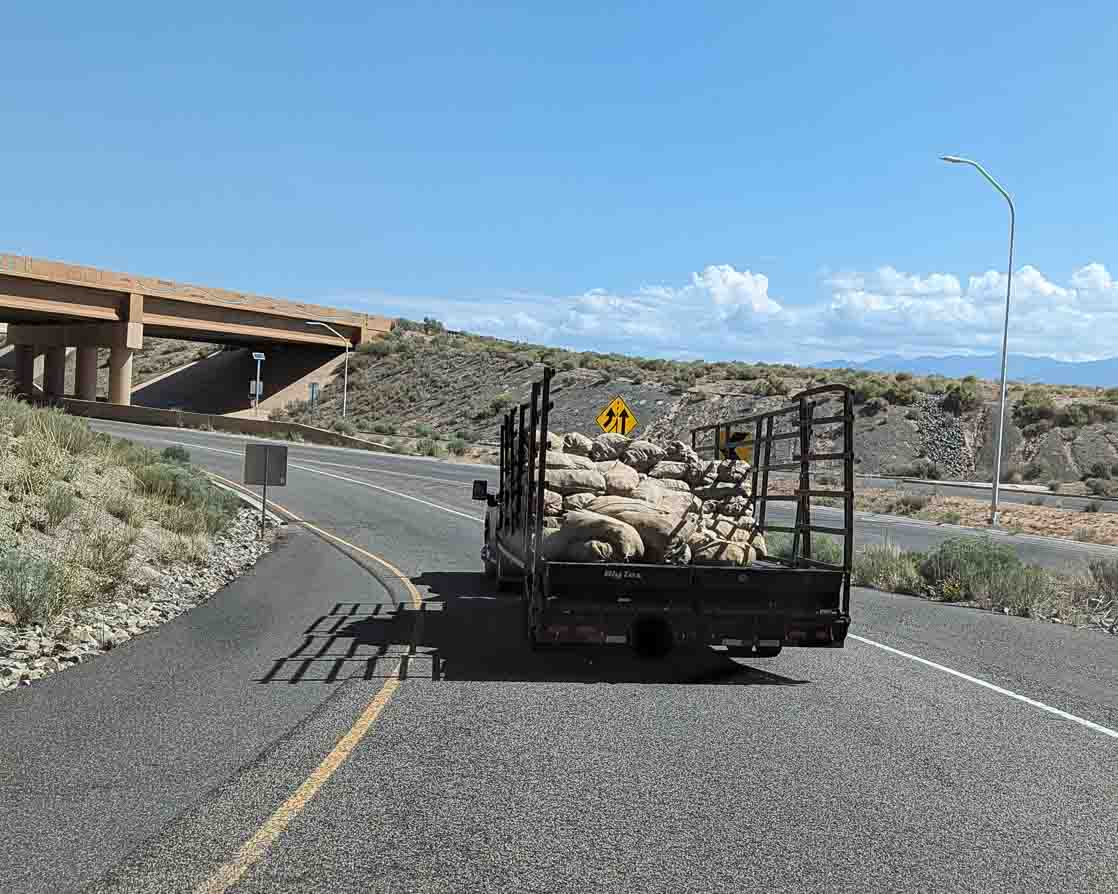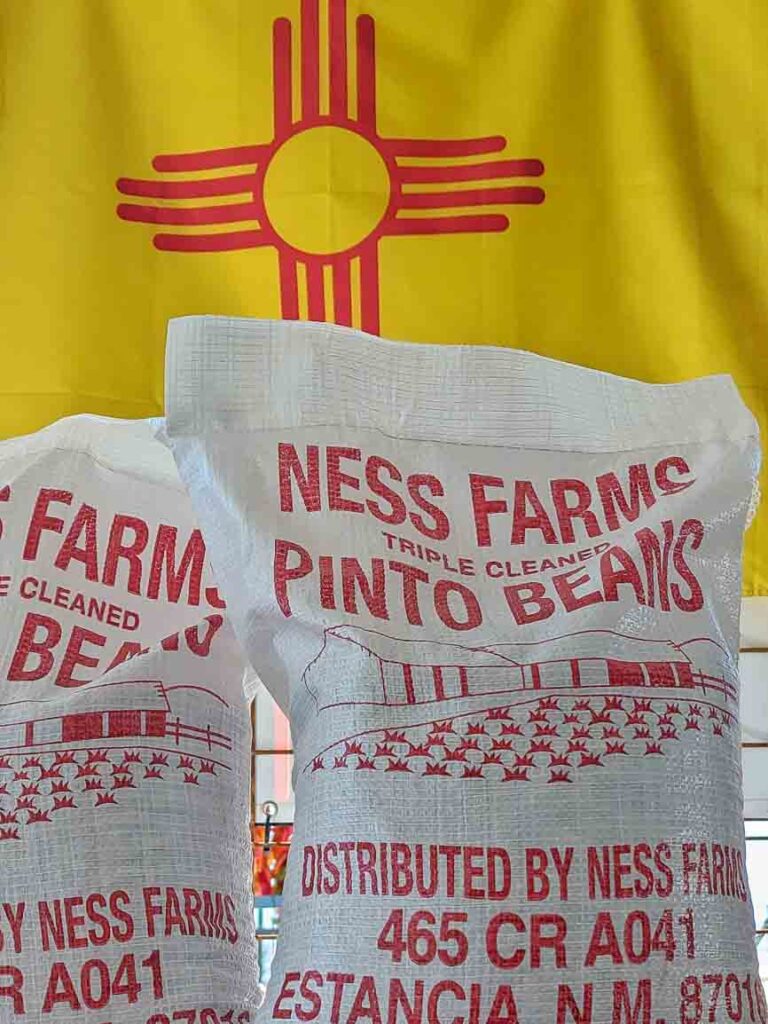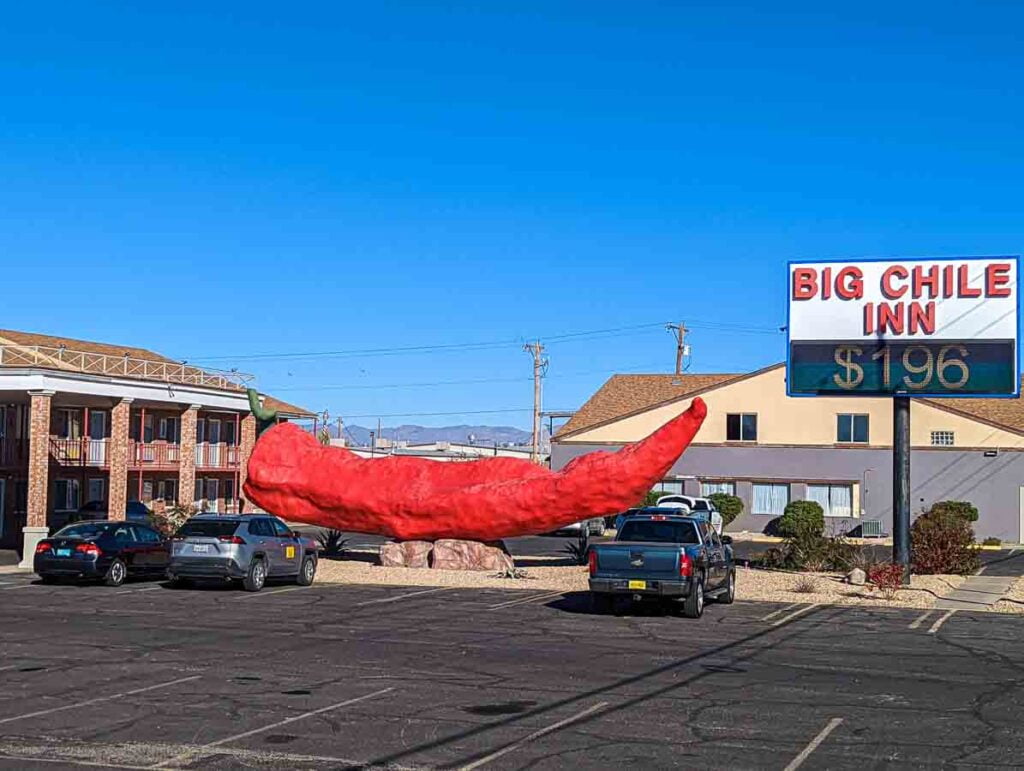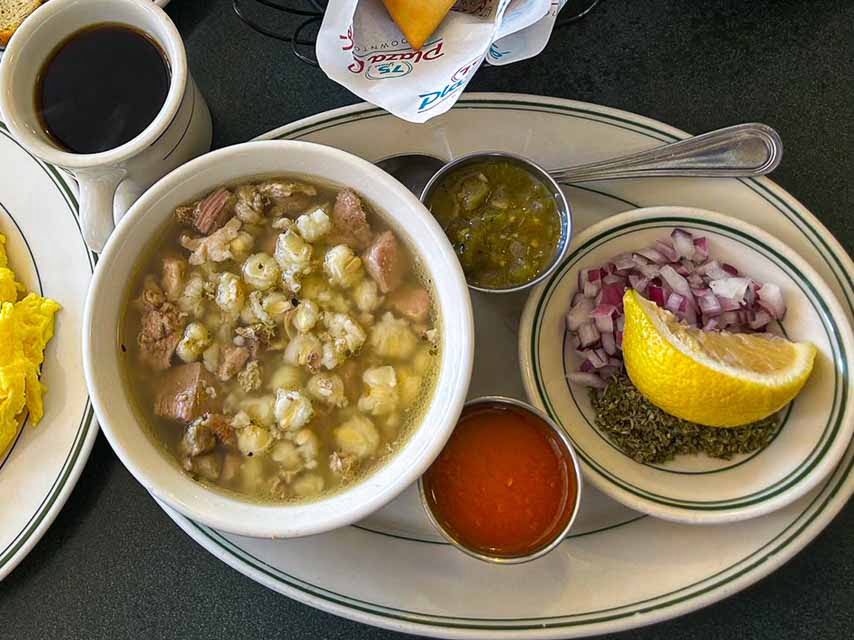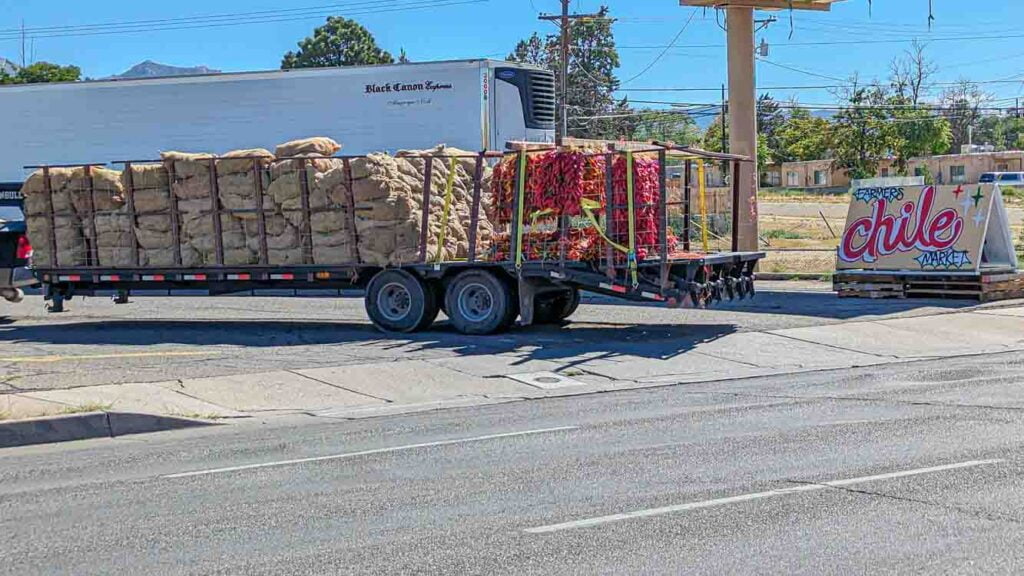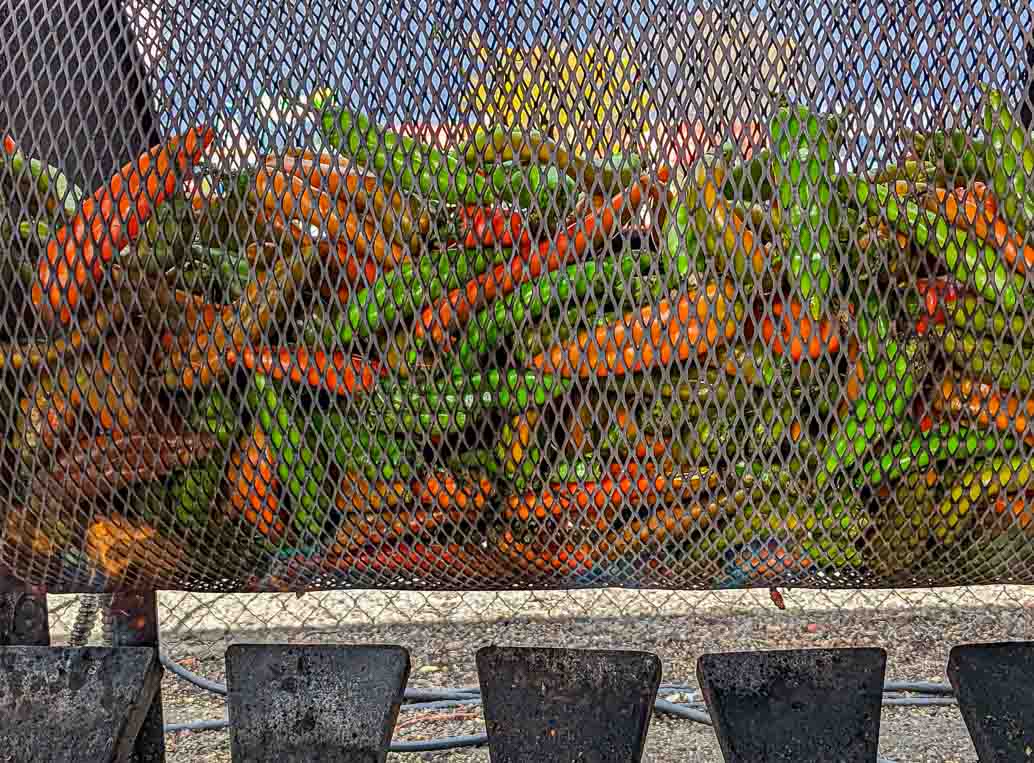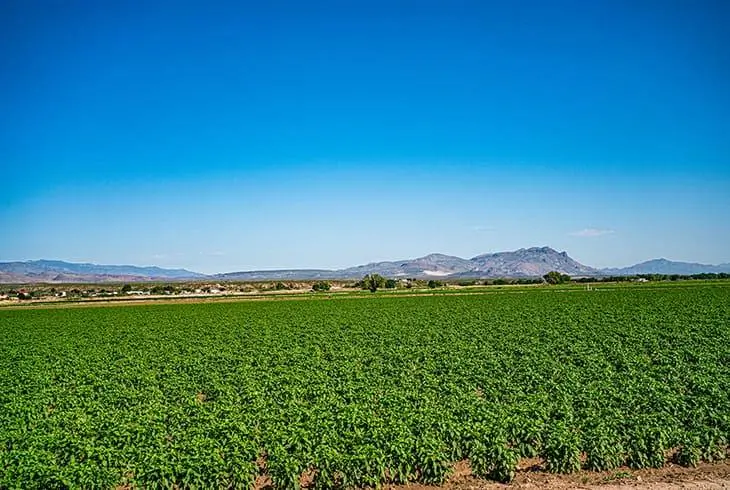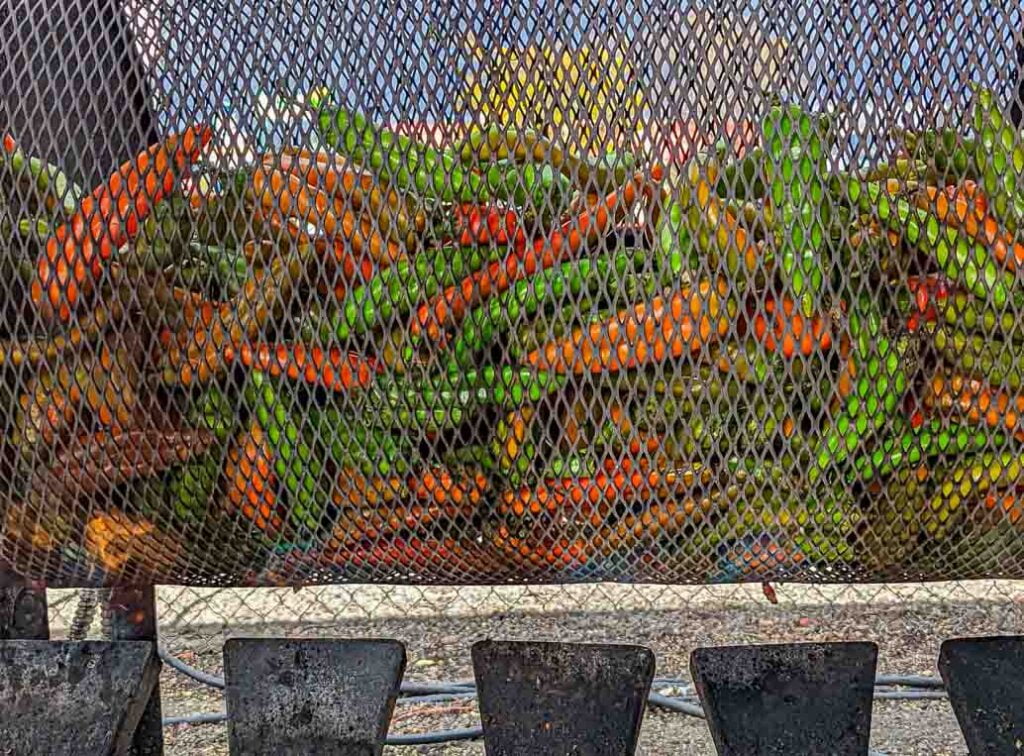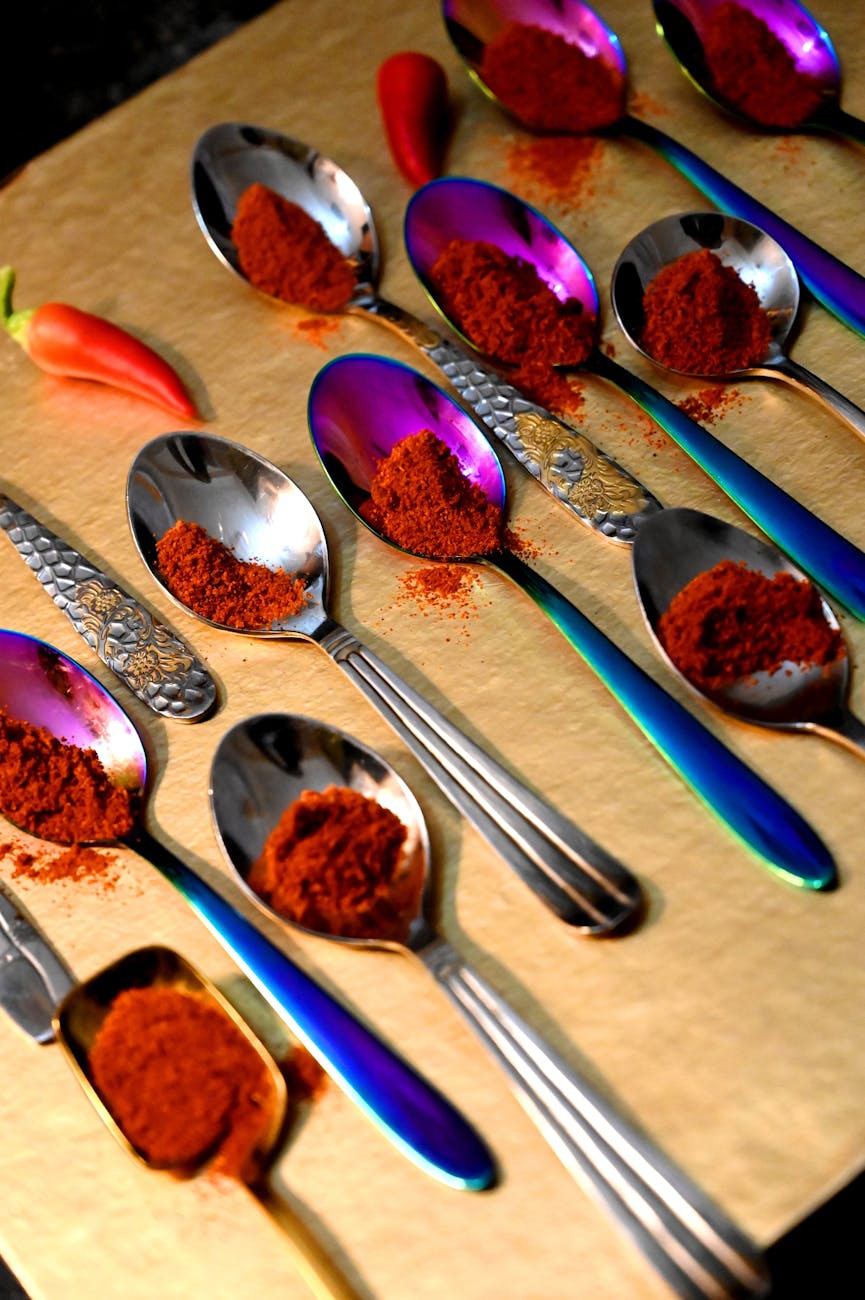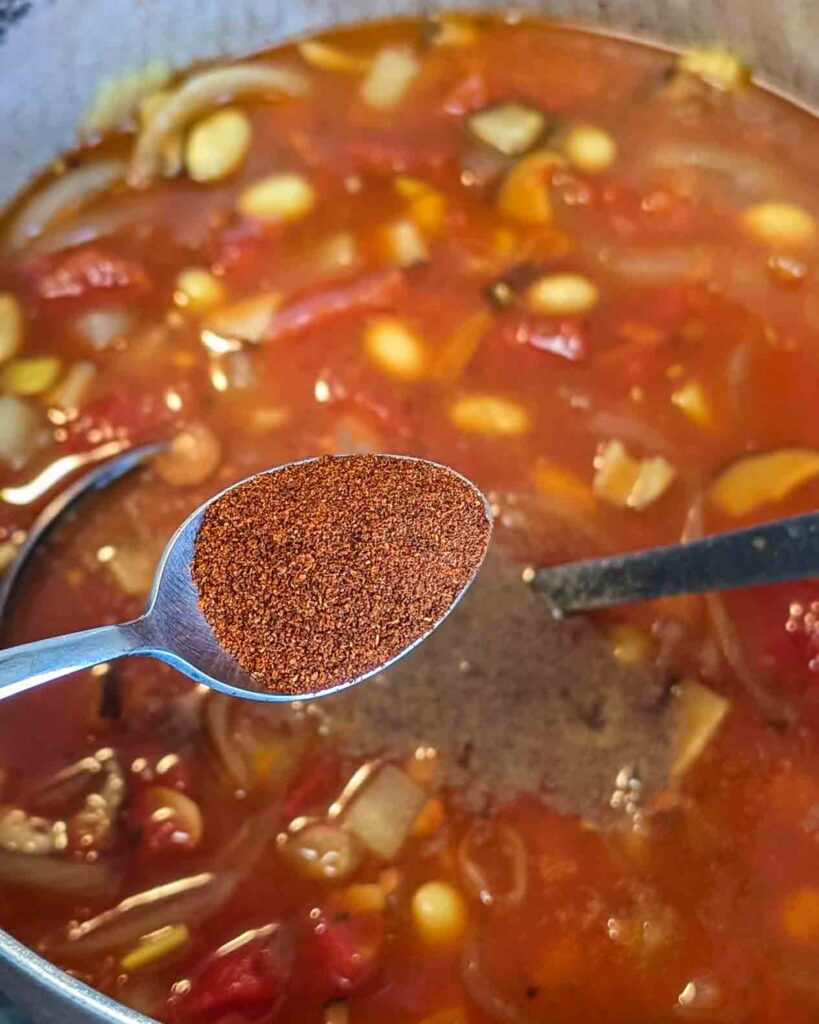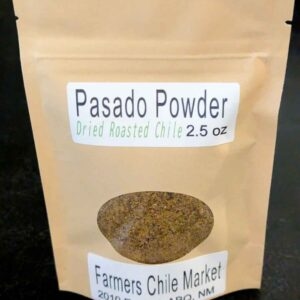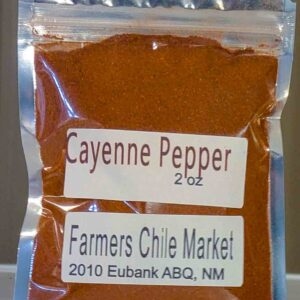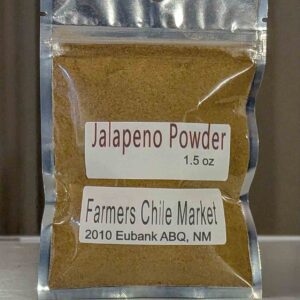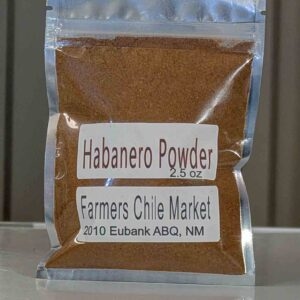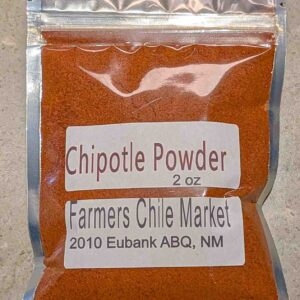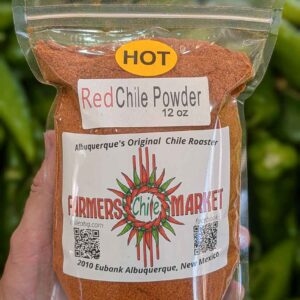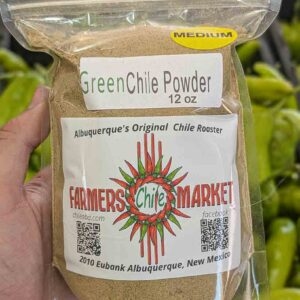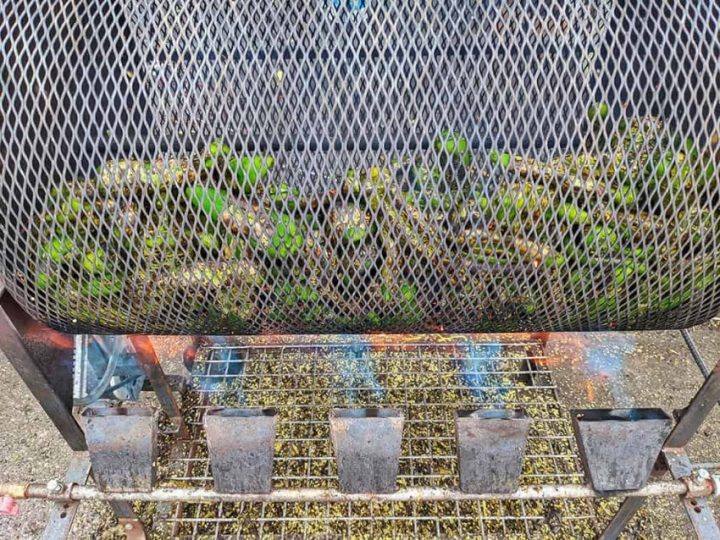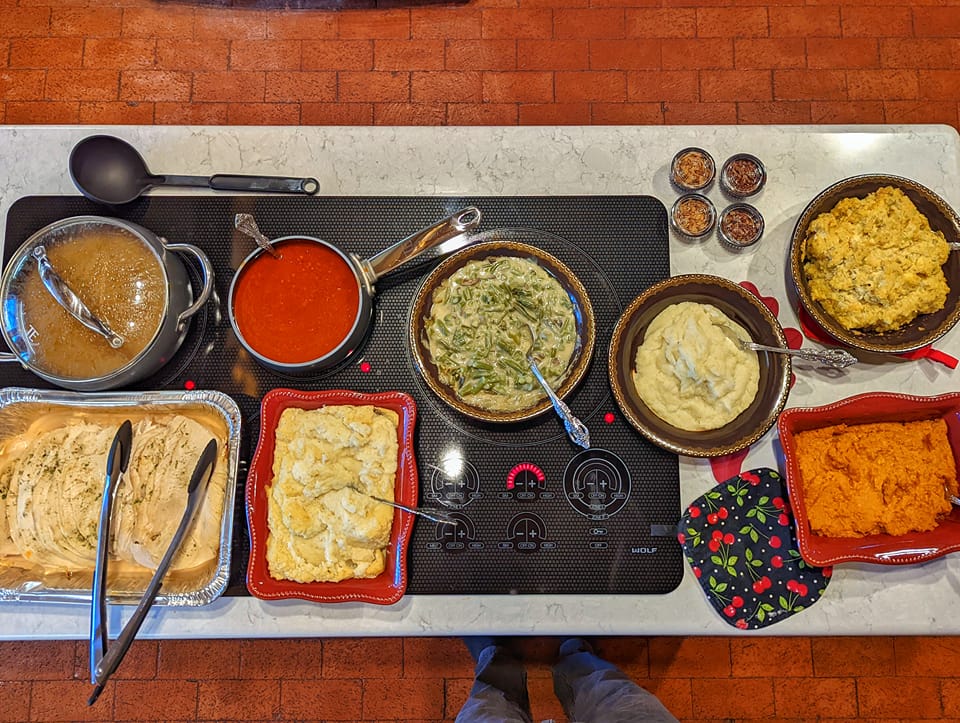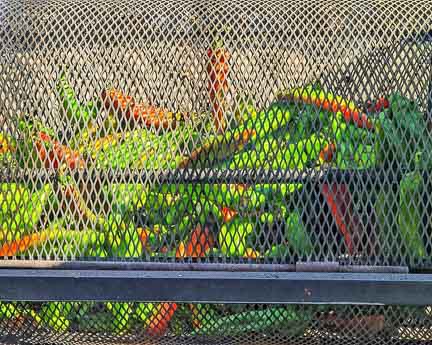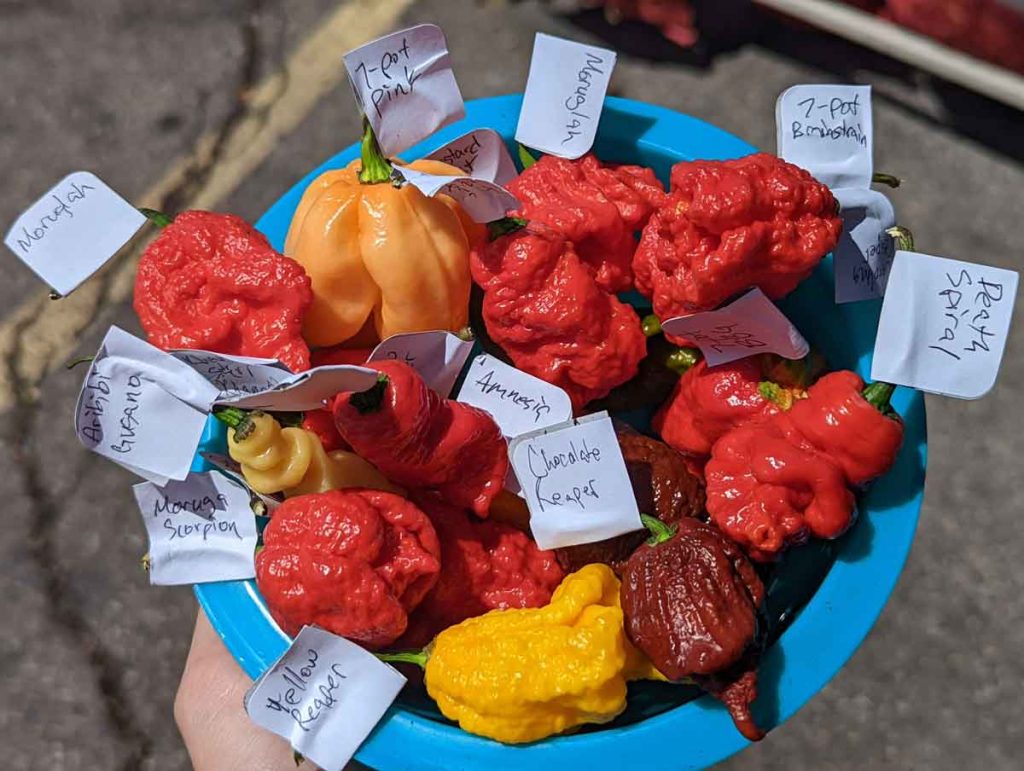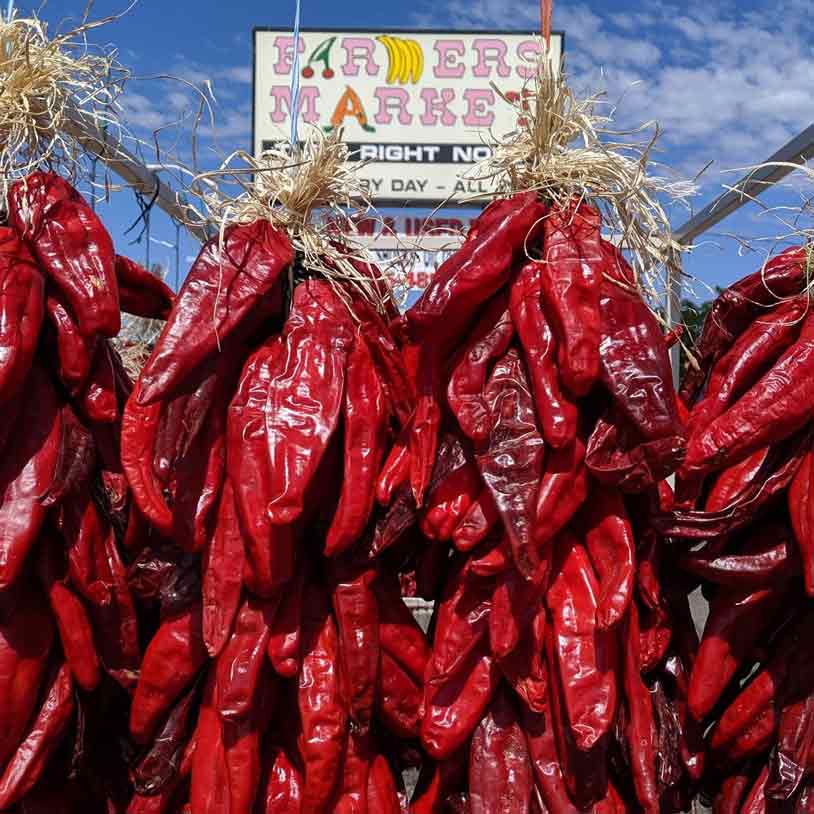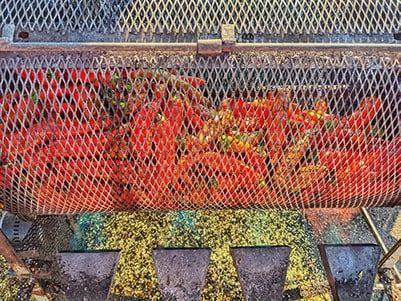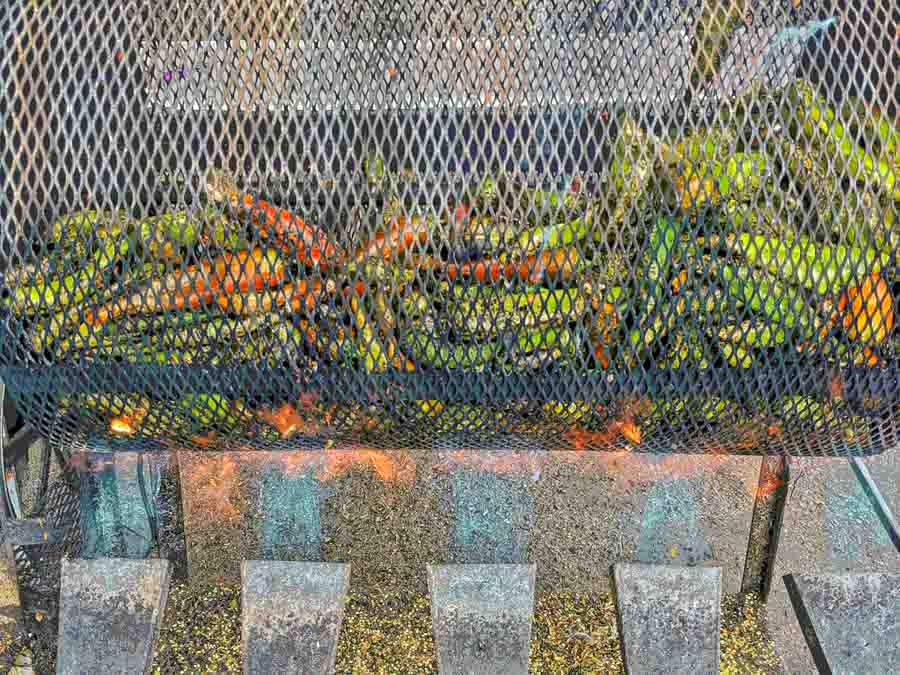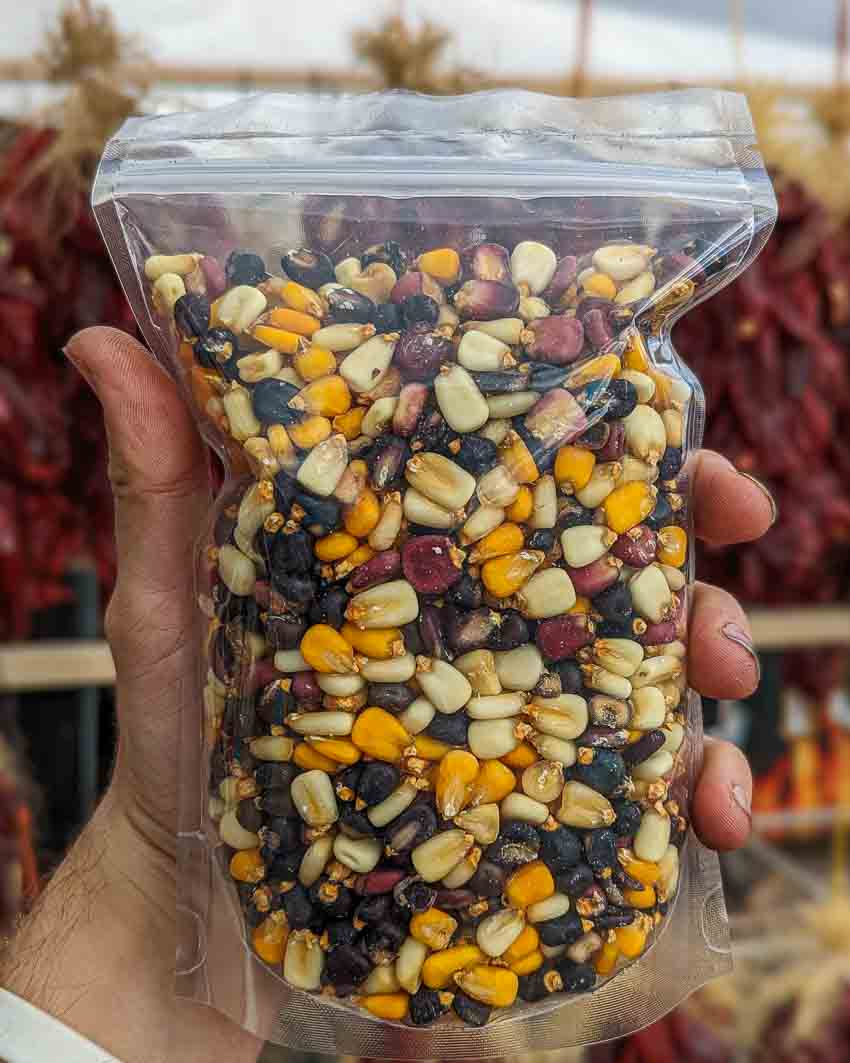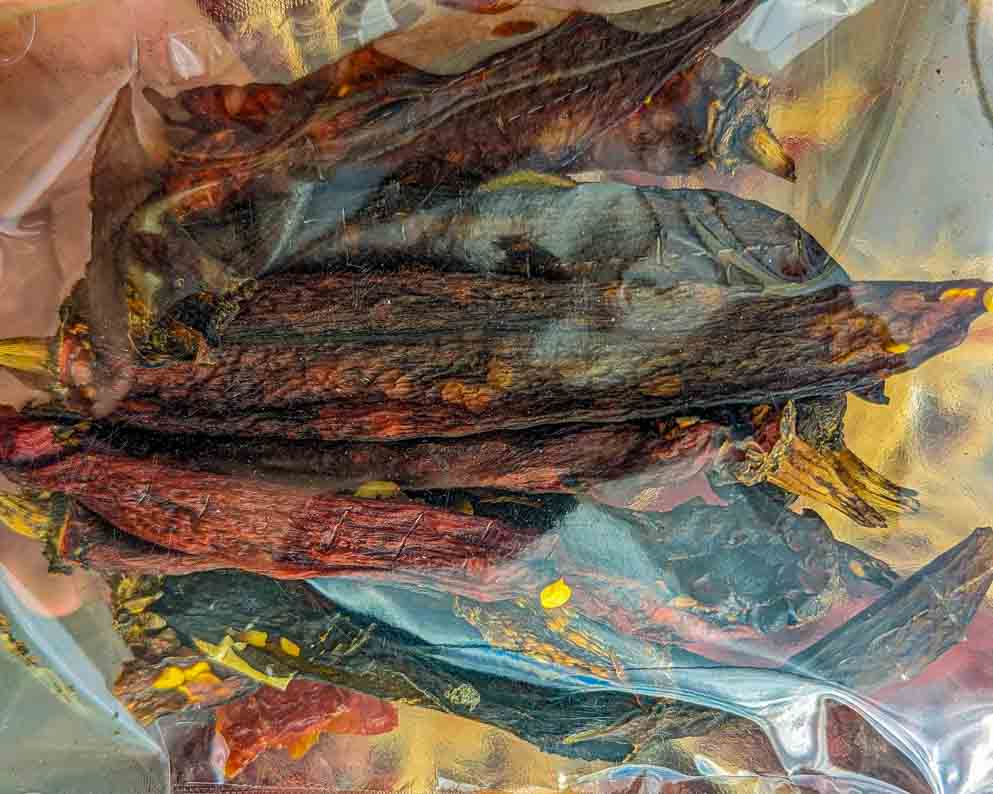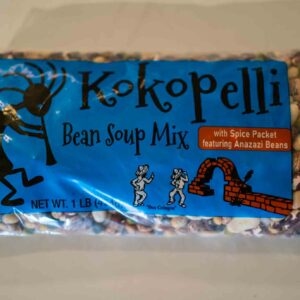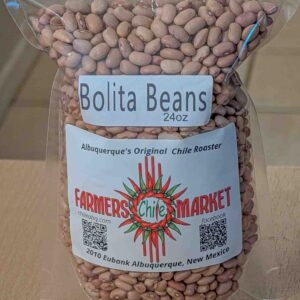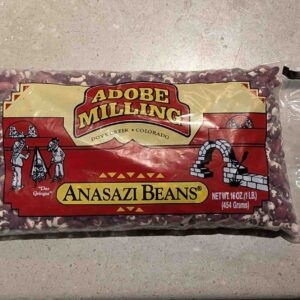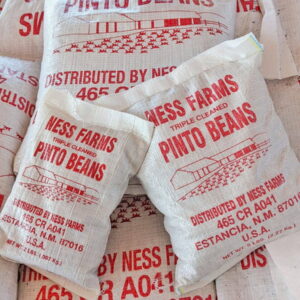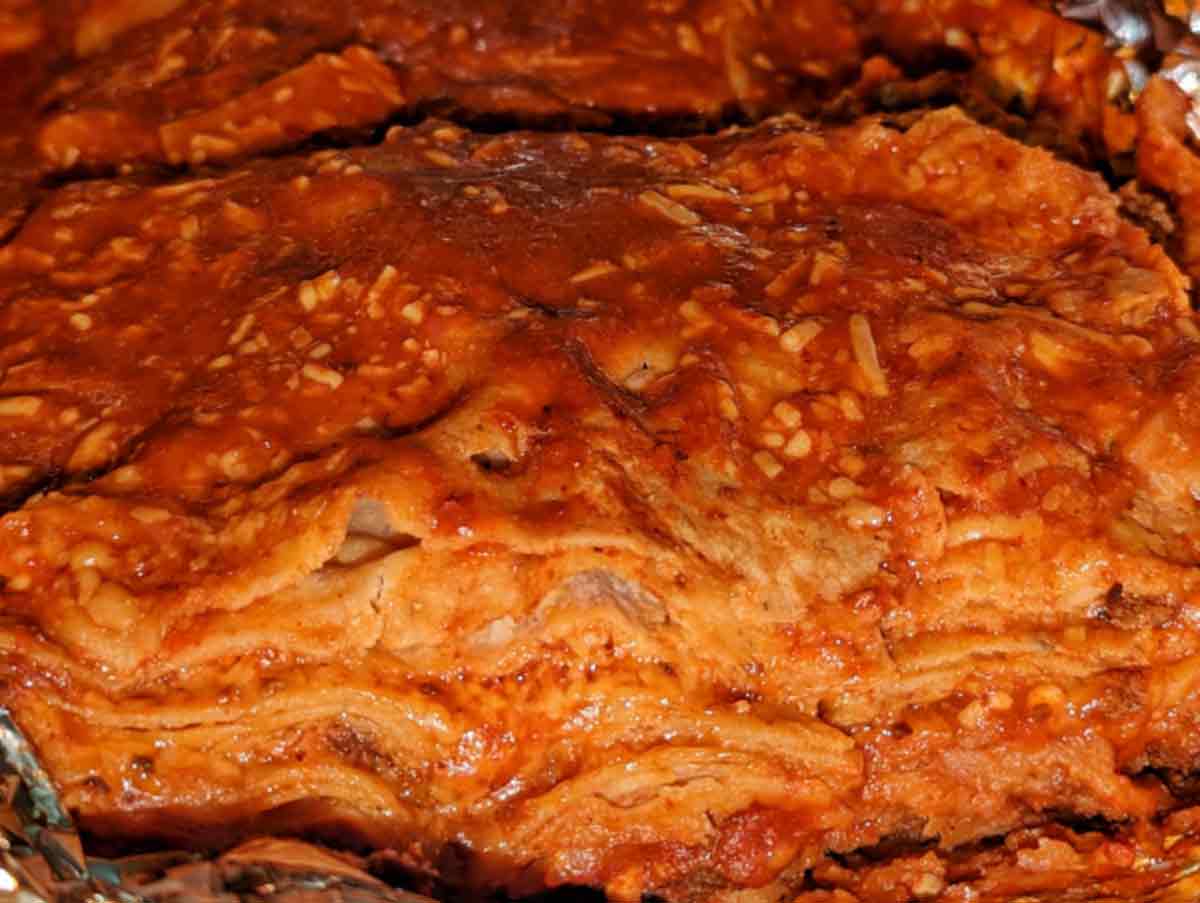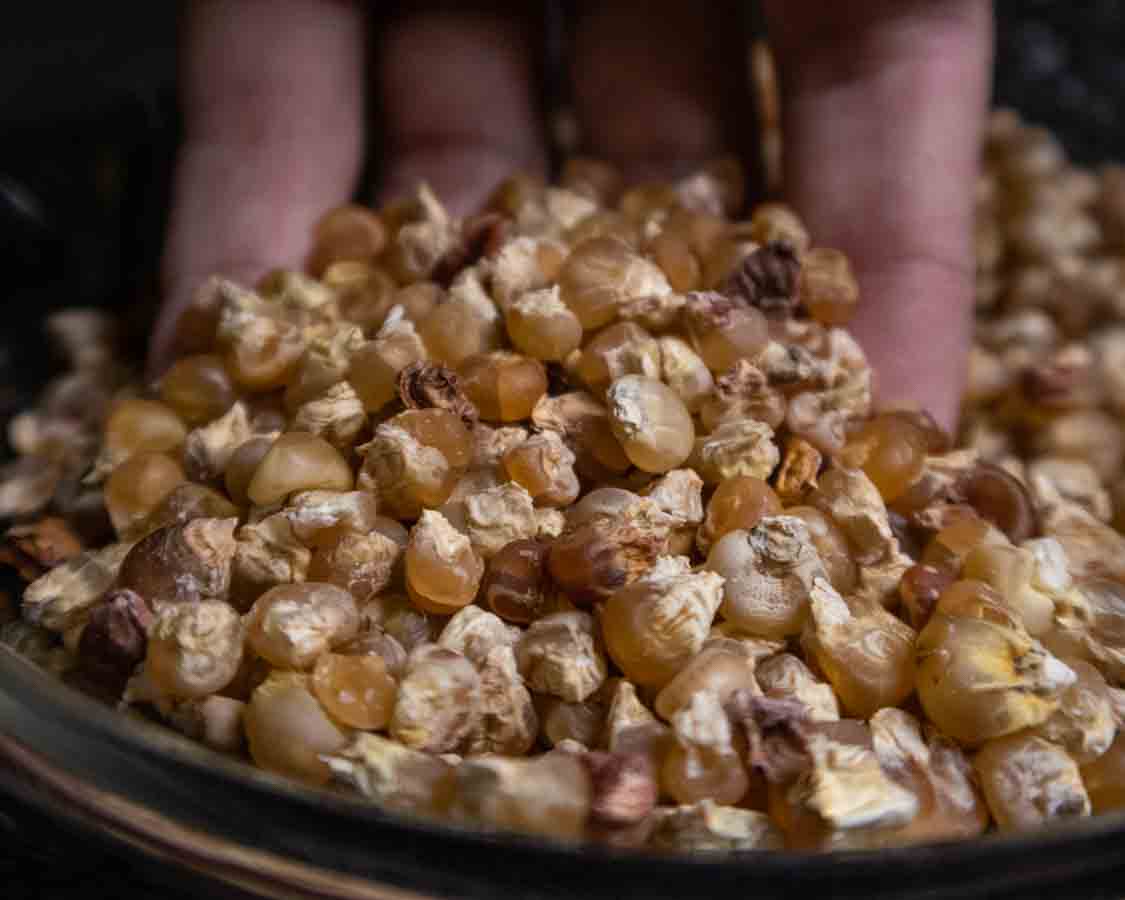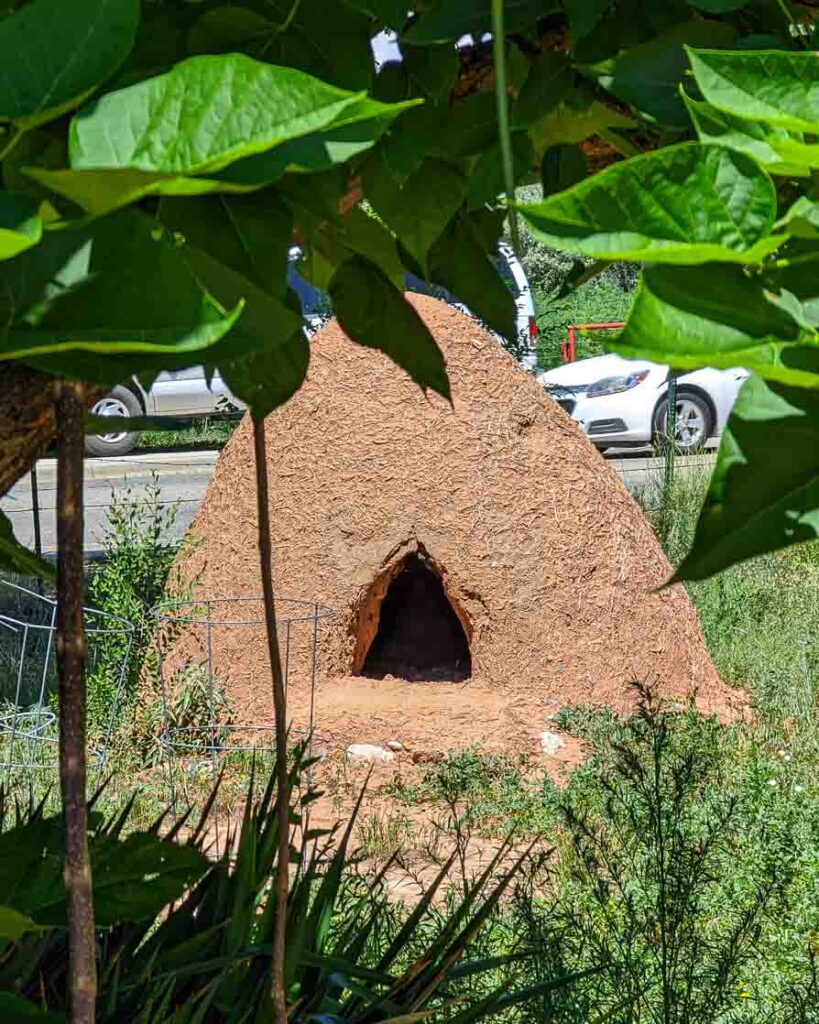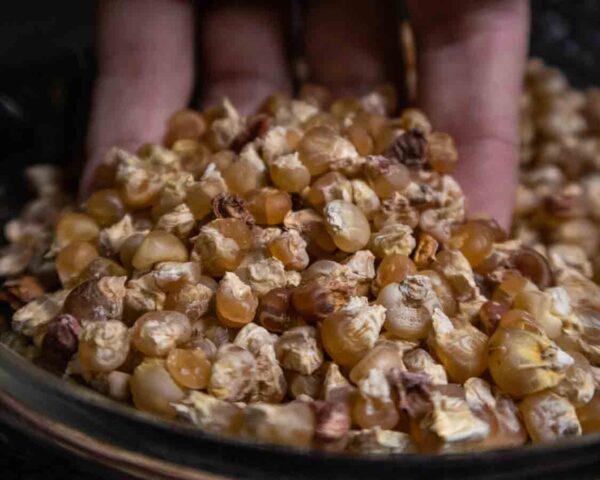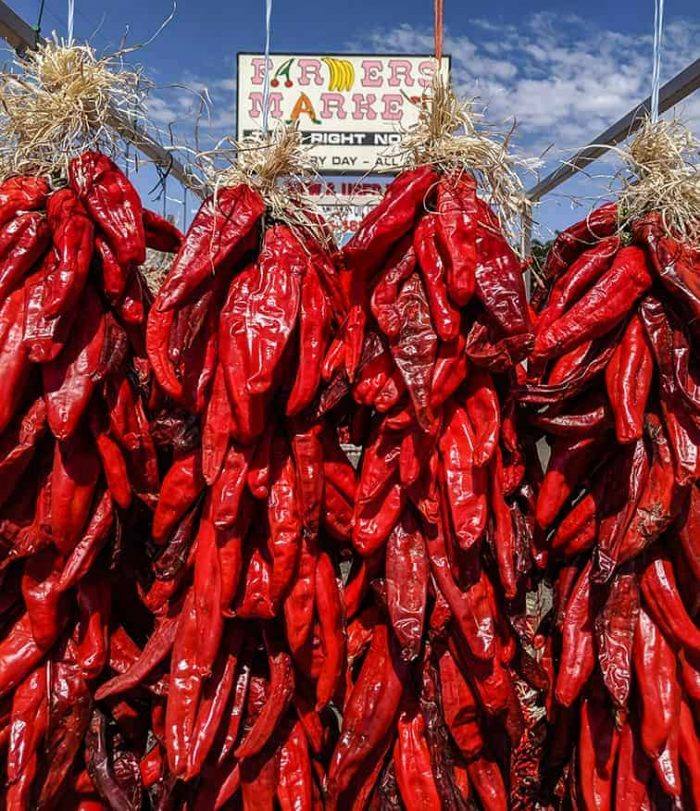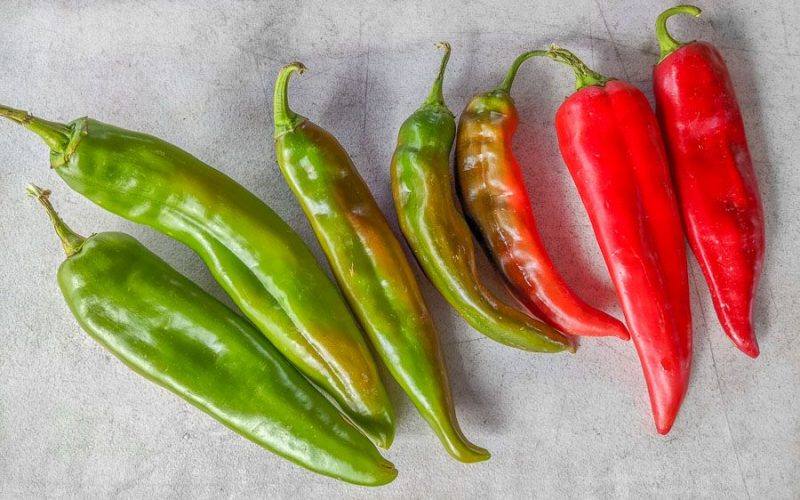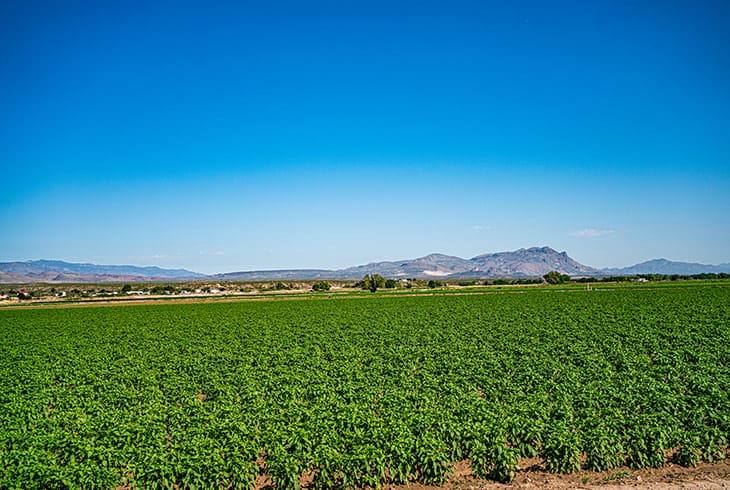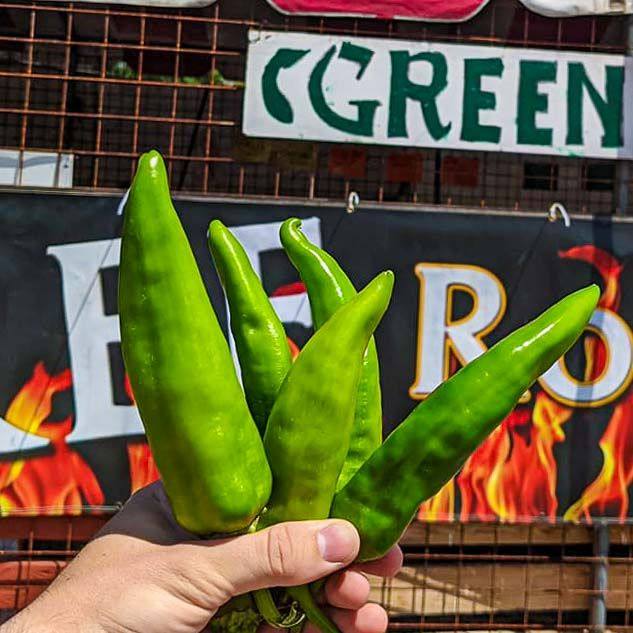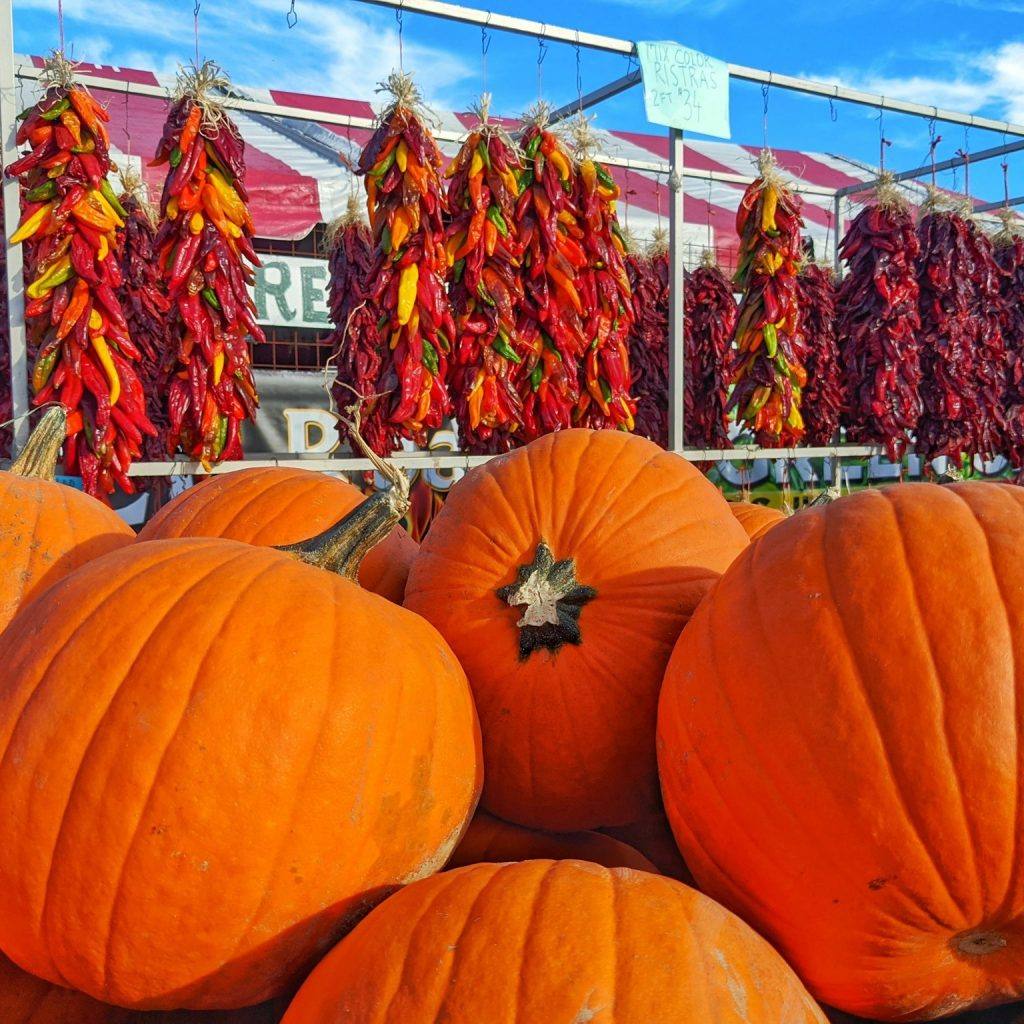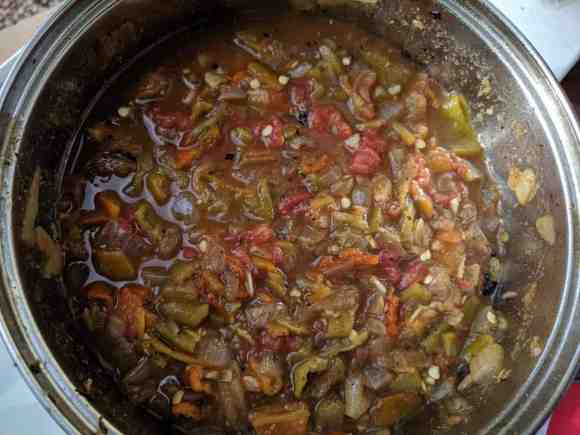Hatch green chile is by far and away the most popular aspect of New Mexican cuisine. Although we have many local delicacies like pinon nuts, sopaipillas, posole, tamales, red chile, and much more, the fundamental aspect of our food is green chile!
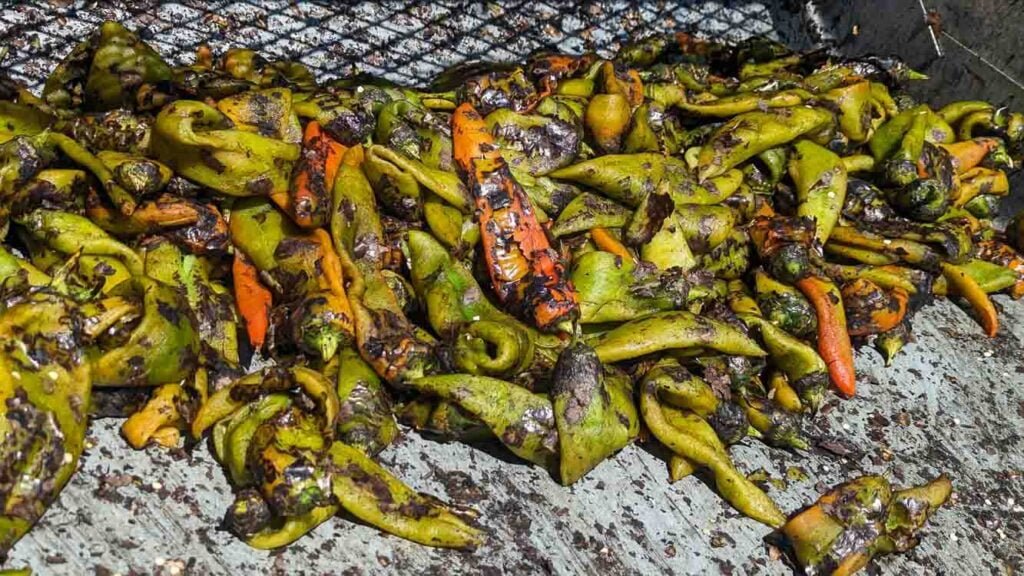
Why is Hatch green chile special?
There are many reasons, such as climate, terroir, and other factors, but I believe the fundamental reason is culture. The Hatch Chile Festival shows how important green and red chile are to us in New Mexico. Most chili peppers in the world are sliced or blended without much processing. Hatch green chile is always roasted and peeled. This roasting process is super important in unlocking the true flavor potential of our many varieties of chile in New Mexico. Every year chile roasters pop up on street corners in every city and town in New Mexico to bring that fresh roasted goodness close to home!
Common Green Chile Dishes
Green Chile Cheeseburger
Perhaps my favorite New Mexican food, the green chile cheeseburger is a super popular option that people rave about far and wide. Although chopped roasted Hatch green chile is simply a topping, it is one that really elevates the dish to new highs. The roasted flavor of chile mixes well with the char of the burger, and the cheese mellows the chile’s spice into a smooth and balanced experience. I travel around New Mexico a lot to get different local specialties to sell at my shop, and during my trips I try out green chile cheeseburgers from all around the state. It is one of my favorite things about my job!

Chile Rellenos
Because Hatch green chile is so large and meaty, it is a great choice to stuff with cheese and fry up! The traditional chile for this dish is the medium heat Big Jim, as it is big and mostly straight. A recently released hot chile variety known as Ms Junie has also become quite popular in recent years. It is big, straight, and packs even more heat than the older hot chile variety of Sandia. Chile rellenos are a huge indicator that we love chile in New Mexico, as we even make it a main course!
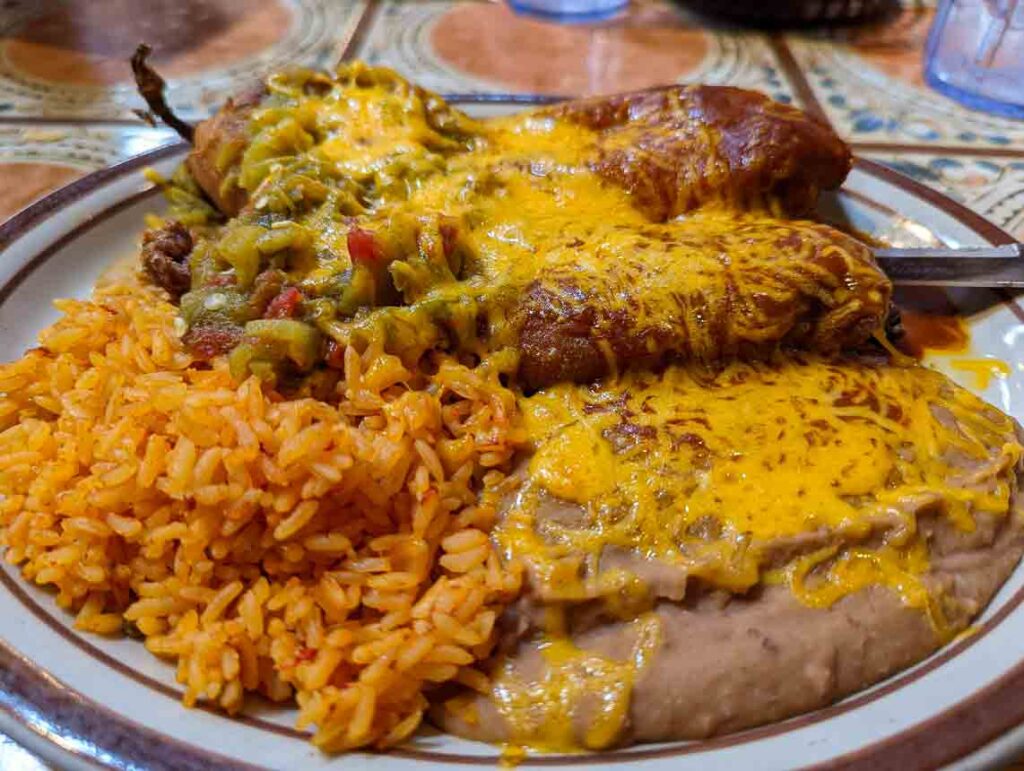
Green Chile Stew
A green chile stew is a classic winter food, but also a very common bar food in New Mexico too. It is arguably the most common soup eaten in New Mexico, but a red chile posole is also a very popular one. There are many types of green chile stew, including cream stews, mushrooms stews, and much more. I think the most common variety uses ground beef and potatoes, but chicken is also a very common ingredient. I personally make green chile stew a lot, because it’s easy and I always have a few extra bags of roasted chile at closing during chile season. First, I sauté onions, garlic, and mushrooms, then throw in the chile, add water and chicken bouillon, and throw in some potatoes. After simmering for about 30 minutes, an easy and healthy meal is ready!
Green chile enchiladas
There are two main kinds of enchiladas that use green chile. One is green chile and chicken, which typically has cheese. The other is a vegetarian option with just green chile and cheese. That being said, with Hatch green chile, the options are really endless! Sautee green chile and mushrooms with some onion and garlic powder and throw it in an enchilada. Putting that mixture in an omelet or on a piece of bread will work great too! That’s how versatile roasted green chile is!
Green Chile Sauce
Green Chile Sauce is one of the two mother sauces in New Mexican cuisine along with red chile sauce. Take roasted Hatch green chile, peel it, chop it up and sauté it with onions, garlic, salt, and pepper. Add a little chicken or vegetable stock, and you are done. It’s that easy to make, and it can go on just about anything. Making tacos? You’ve got a salsa. Want to eat some chips while watching the game? You’ve got a dipping sauce. Making a spicy curry? Throw in your leftover green chile sauce, it will taste great!
Hatch Green Chile Salsa
Next time you make a fresh salsa, instead of getting jalapenos or serranos, consider just dicing up some roasted green chile instead!. The smokey flavor of the roasted green chile will meld so nicely with the tomatoes, onions, and other seasonings in your salsa. It goes nicely with a little citrus like lemon and lime too! A quick and easy green chile salsa recipe is just diced tomatoes, onions, roasted chile, along with garlic salt, pepper, and lime juice. It shouldn’t take more than 5 minutes if you already have roasted chile! If you have frozen chile, ad another 5 to 10 minutes for defrosting!
Green Chile Fusion Dishes
In New Mexico, you can also find tons of green chile fusion dishes. Because Hatch green chile has such a versatile flavor profile, it mixes well with tons of stuff! You can get a Vietnamese Banh Mi with green chile as a topping. A common bagel variety in New Mexico has green chile and cheese baked into it! If you like Italian food, most restaurants will offer a green chile fettuccini alfredo or ravioli among other options. Creative chefs in New Mexico are always looking for new ways to incorporate roasted Hatch green chile into their recipes!
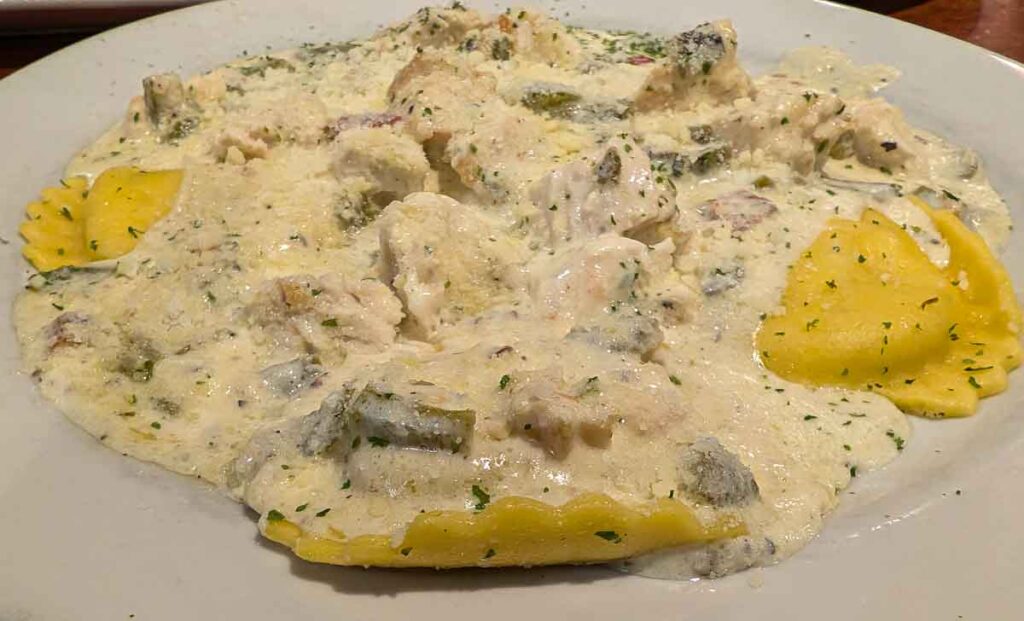
How Hot is Hatch Chile?
Hatch chile has many different varieties, which we typically label Mild, Medium, Hot, X-Hot, and XXX-Hot. The typical Scoville levels of each are around 500-1,000 for mild, 1,500 to 3,000 for medium, 5-6,000 for Hot, 8,000-10,000 for X-Hot, and 10-12,000 for XXX-Hot.
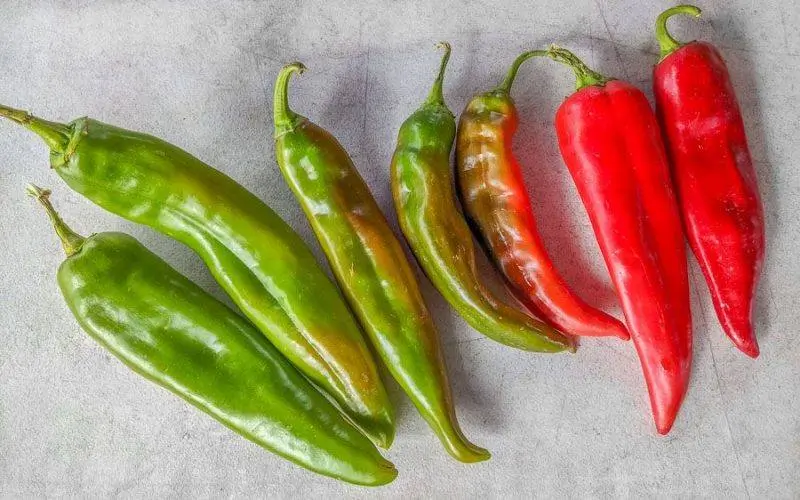
Hatch Green Chile Powder
A relatively new product, green chile powder is a nice spice that can give a little heat and flavor to a dish. It’s a bit more expensive than red chile powder, but plenty of people prefer it over red.
Hatch Green Chile Powder for sale online
Of course we have it available! Check out our offerings below
Hatch Green Chile Powder
How to Grow Hatch Green chile?
Hatch chile specifically is only grown in the Hatch valley of New Mexico. That being said if you want to grow New Mexico chile varieties, check out our guide to growing chile! Chili plants are quite resilient and can grow in many conditions. Just make sure your soil has good drainage, a decent pH, and include plenty of calcium in your soil. This will prevent the majority of potential growing problems. When the green chile is not super tender and easy to bend, it is ready to pick. In case you are looking for New Mexico chile seeds to buy, we recommend Sandia Seed Company and the Chile Pepper Institute.
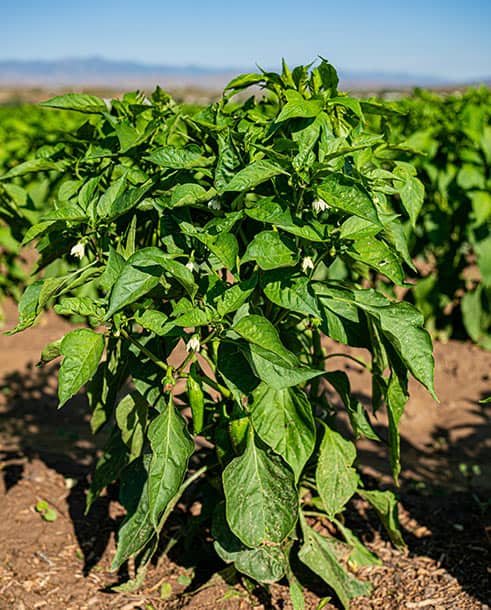
More About Hatch, New Mexico
In case you are interested in the history and geography of Hatch, I have another post about the Village of Hatch, which goes over its history as well as certain important people in its development into the Chile Capital of the World! Be sure to read The Village of Hatch, New Mexico!

Hatch Green Chile Store
Although New Mexico is full of many different chile stores and chile roasters, I like to think that my store is a bit different. I spend a lot of time traveling and learning all about food both at home and abroad. In doing so, I feel I’m able to compare and contrast different aspects of New Mexican cuisine more than most other chile shops. A large part of why you are reading this is because of that work I’ve put into understanding this field. I’m proud of our New Mexican cuisine, and I’m glad to run a chile roaster during the chile season and an online shop almost year round!
Hatch Chile For Sale Online
During the offseason, we mainly just have have dried chile and New Mexican goodies for sale, but during the season we also have many varieties of fresh green chile too!
10 lbs Fresh Hatch Green Chile
This fresh Hatch green chile is a perfect way to kickstart your New Mexican food this chile season! Buy it for yourself or a friend and enjoy the flavor of the southwest!
5 Lbs Fresh Hatch Green Chile
This fresh Hatch green chile is a perfect way to kickstart your New Mexican food this chile season! Buy it for yourself or a friend and enjoy the flavor of the southwest!
.5 oz Dried Carolina Reapers
.5 oz Dried Ghost Peppers
12 Inch Pequin Chile Ristra
12″ Red Chile Ristra
18 Inch Hatch Red Chile Pequin Ristra
2 ft Pequin Chile Ristra
24″ Red Chile Ristra
6 Inch Pequin Chile Ristra
Anasazi Beans
Ancho Chile – 4oz bag
Blue Bird Flour
Bolita Beans
Cascabel Chile
Cayenne Pepper
Ceylon Cinnamon
Chile Tepin
Chipotle Meco
Chipotle Morita
Chipotle Powder
Dried Puya Chile
Dried Roasted Hatch Green Chile – Chile Pasado
Dried Roasted Hatch Red Chile – Chile Pasado
Dried Superhot Peppers
Guajillo Chile
Habanero Powder
Hatch Green Chile Powder
Hatch Pequin Chile Ristra Cross
Hatch Red Chile Pods 8 oz
Hatch Red Chile Powder
Heart Shaped Pequin Chile Ristra
Jalapeno Powder
Kokopellli Bean Soup Mix – 1 lb
Mexican Oregano
Montana Raw Honey 12 oz
Ness Farms Estancia Pinto Beans
New Mexico Piñon Nuts
Pasilla Chile – 3 oz
Pequin Chile Wreath
Roasted Hatch Chile Powder – Chile Pasado Powder
Sage Smudging Sticks
Whole Dried Paprika
